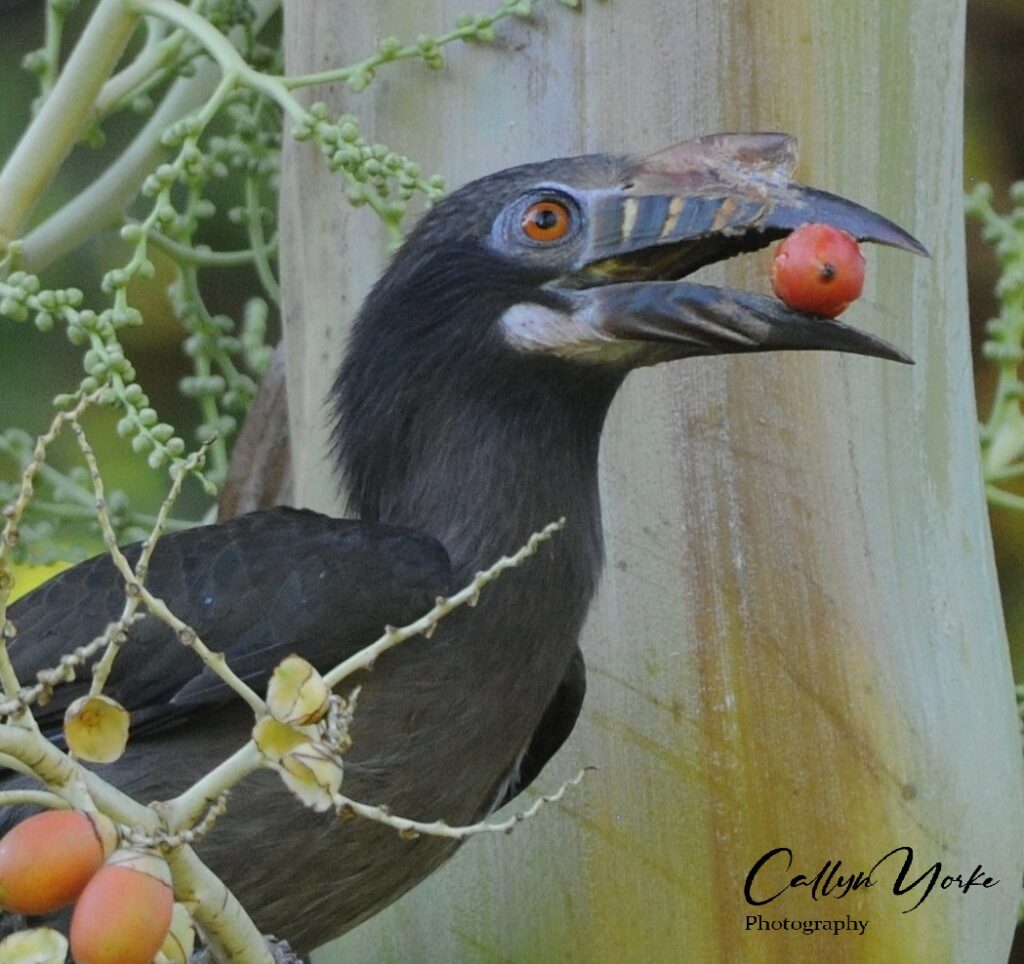
Bird Surveys of Luzon, Philippines, November 19 – December 2, 2022 Callyn Yorke
Scroll down for Annotated Bird Lists
INTRODUCTION
A monthly exit for renewal of my Vietnam Visa (30-day, single entry) had thus far taken me to several neighboring countries in Southeast Asia, primarily for birding and photography (see links to my previous reports for Indonesia, Laos, Malaysia and Thailand). Manila was only a three-hour flight from Saigon and seemed like it would be an interesting destination, especially since this would be my first trip to the Philippines. I was unsure of exactly what to expect, aside from a bunch of new bird species for my life list, mainly those species occurring nowhere else in the world, e.g. Luzon Hornbill, Elegant Tit and Stripe-headed Rhabdornis – photos). On that account, the trip was fabulously successful.

Prior to the trip I contacted a local Filipina birder, Irene Dy, regarding the possibility of doing a professionally guided bird tour in Luzon, the largest of the Philippine islands, and one presumably with the greatest bird species diversity. Irene provided three birding itineraries which, I’m sure would have been productive, but seemed rather too rushed for my style of birding. Additionally, the cost of her four-day bird tour would have exceeded by far what I had been spending while birding in other Southeast Asian countries.

Ultimately, I chose to make the best out of a solo birding trip, with an initial hotel reservation near La Mesa Eco-park in Quezon City. The remainder of my Philippine journey would be made up as I went along. That plan worked fairly well, though not without a few logistical challenges, as expected. This sort of flexible itinerary was one I had become accustomed to through the years; inconveniences were commonplace. In this case, my adventures in the Philippines began immediately upon exiting the Manila airport.
Standing at curbside with my bags, I made several inquiries regarding transport to Quezon City. Although English is widely spoken in the Philippines, no one, including armed security guards and airport officials, seemed to understand how they might assist me. Evidently, there was no long-distance public transport at the terminal, only local taxis.
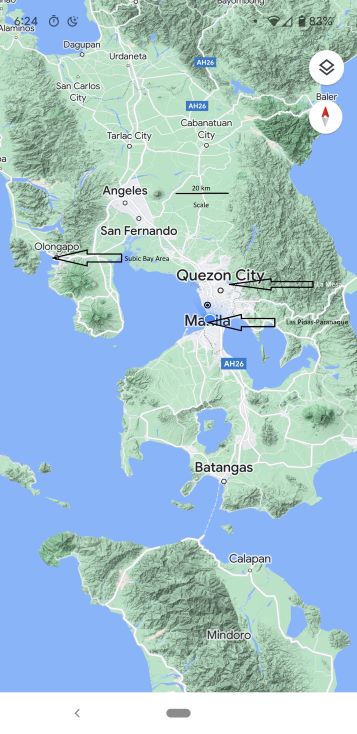
Quezon City (QC), while considered part of Metro Manila (see above map), was well out of the normal public transport range from the air terminal, and even in light traffic and good weather, would be about a two-hour drive. After a half- hour in the rain waiting in line for a taxi, one finally showed up with a middle-aged driver who looked completely exhausted. He must have needed the work badly and agreed to take me to QC. Unfortunately, he wasn’t familiar with QC streets and had no GPS in the car for guidance. We spent at least an hour stuck in QC traffic unsure which way to go. Eventually, an internet kiosk was found, his phone account was credited and we proceeded more or less directly to the hotel using the popular Waze navigation system.
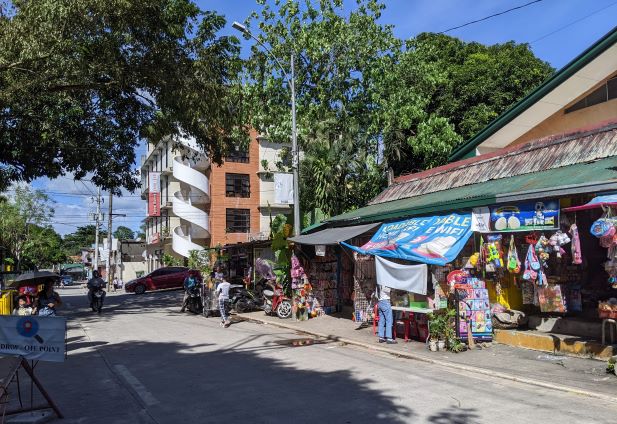
I had reserved a room for three nights at the Spiral Suites Hotel (3-Star), mainly because it appeared to be within of easy walking distance to a well known birding spot, La Mesa Eco-Park. Indeed, the hotel’s location was perfect for me. But that’s about where the perfection ended.
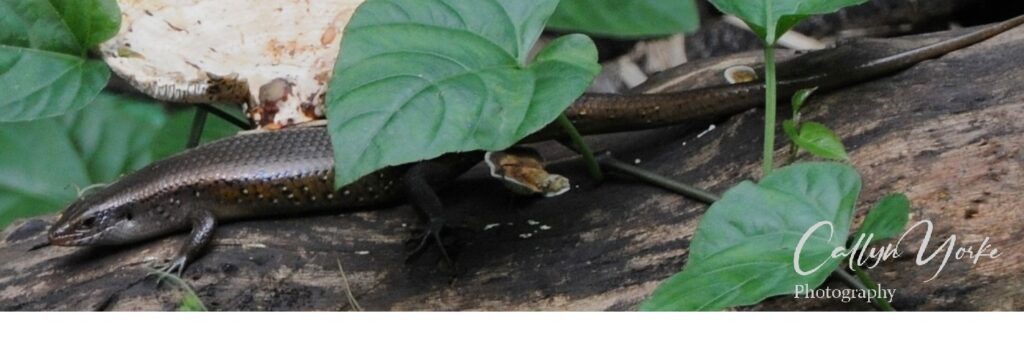
I was assigned a third-floor room to be shared with a small family of invertebrates – quite lively in fact – namely, Oriental Cockroach (Blatta orientalis). Having roaches in my hotel room was certainly not new, nor by itself a deal-breaker.
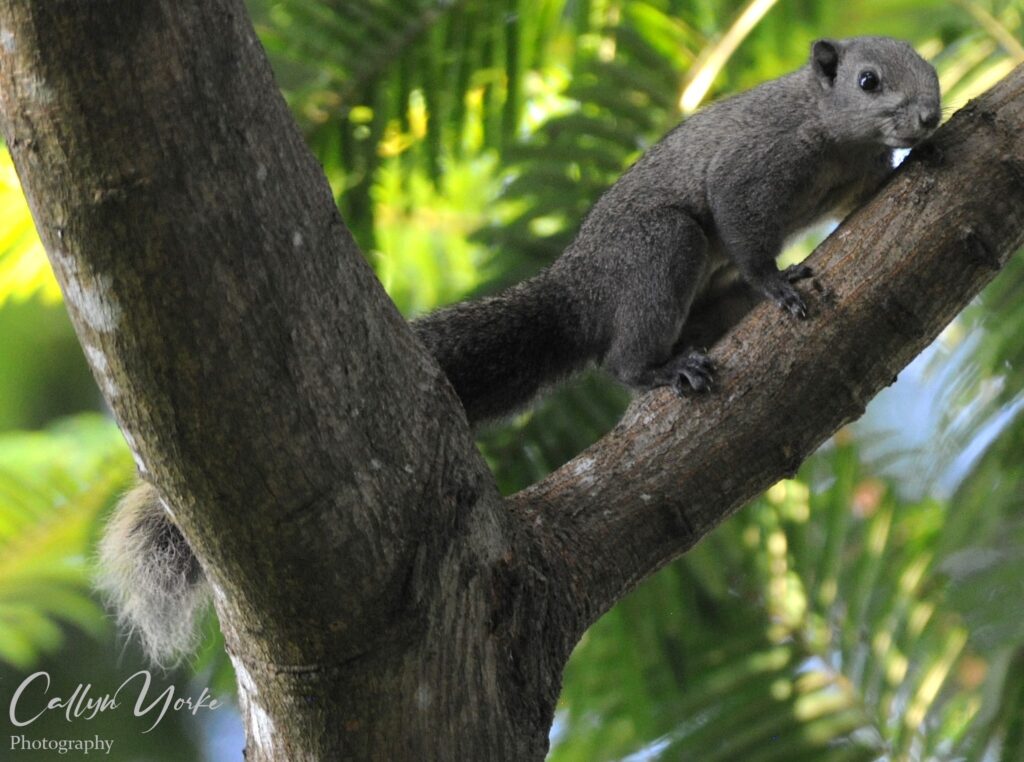
The roach family, visibly alarmed when a light was switched on, was generally well behaved, favoring moist areas, i.e. the shower floor and under a leaky sink. These essentially harmless creatures have had a long coevolutionary history with mankind and, like urban rats, mice, pigeons and sparrows, instinctively know how to avoid trouble. Honestly, for $US 18 per night, how much sanitized luxury could be expected?
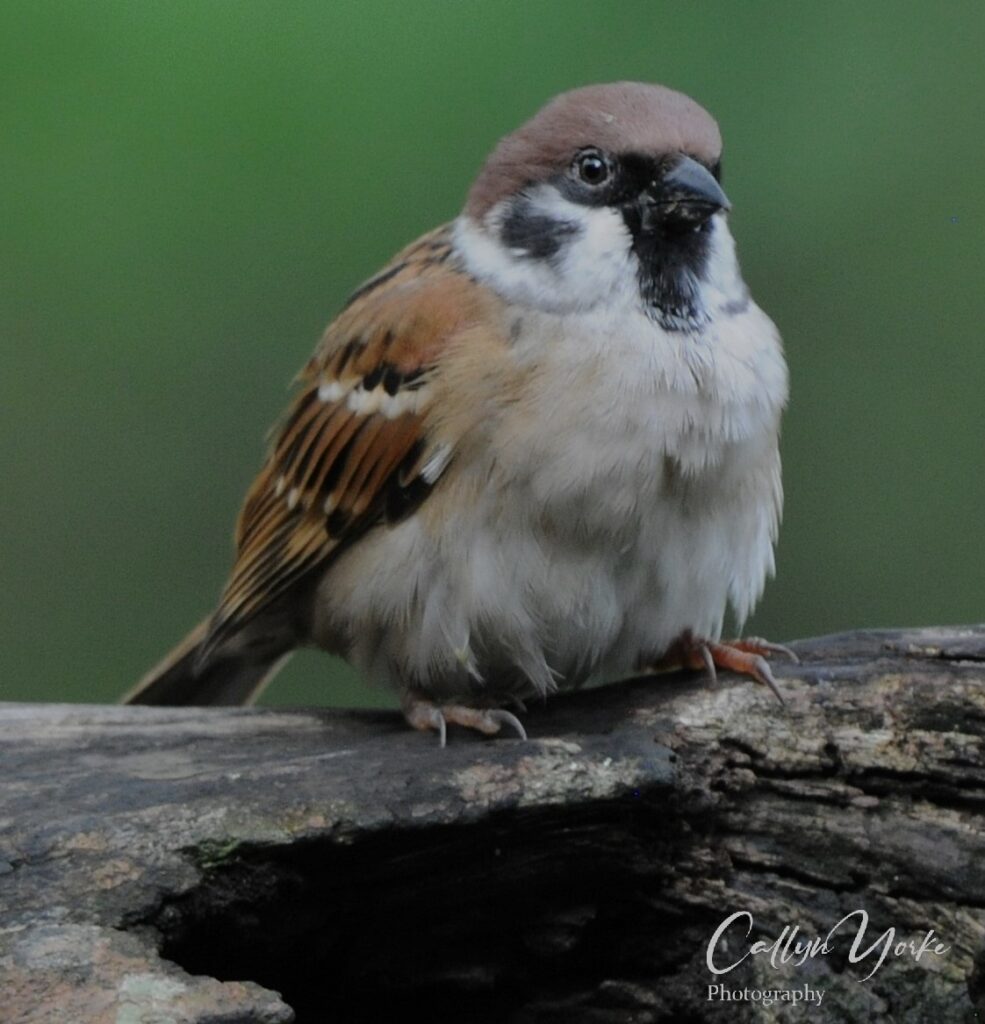
Instead, the pressing issue for me at Spiral Suites was a weak, intermittent Wifi, which prevented me from accessing my email account, and perhaps most importantly, hobbled efforts to make hotel and transport arrangements for the rest of my journey. Reluctantly, the otherwise friendly receptionist, assigned me to an upgraded room on the ground floor, which had the best Wifi reception in the hotel. The recently remodeled, windowless room, was clean and comfortable, and notably, without any roaches to keep me amused while using the bathroom. A restaurant on the fifth floor, cheerfully served a limited selection of Filipino dishes; none included fruit or any kind of salad. Curiously, I found fresh produce abundantly available in the Fairview neighborhood market stalls, which I passed during my daily excursions to and from La Mesa Eco-Park. I kept a bunch of bananas in my room as a nutritional supplement. I’m fairly sure I lost a couple of kilos while staying at Spiral Suites.

I could find no other cafes or restaurants in the upscale Fairview suburbs. But the birding in both the park and Fairview neighborhood was quite good and I ended up spending a total of six nights there.
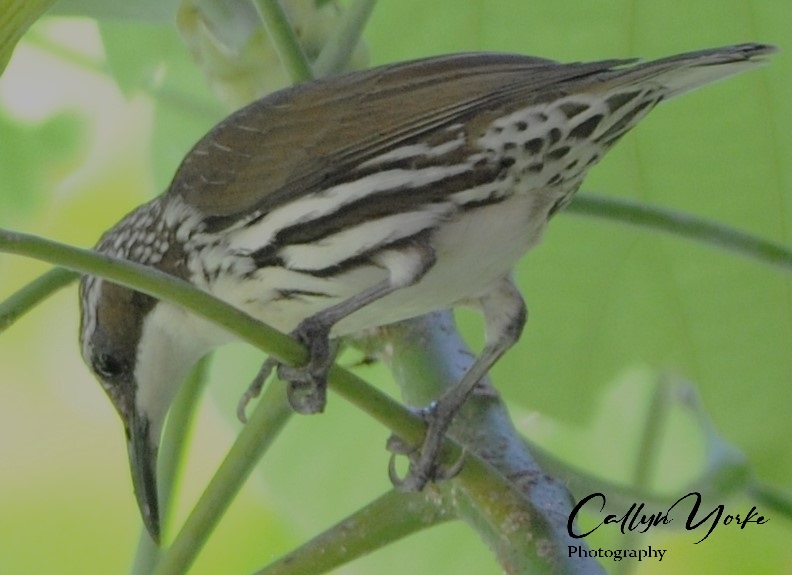
In addition to uncertainties regarding transport to my next destination, Subic Bay, I had prearranged for a bird book (Birds of the Philippines by Desmond Allen, 2020, Lynx Edicions) to be delivered from Europe to the Spiral Suites Hotel. That was a long shot, to be fair. My chances of ever receiving the book, I figured to be less than 50%; the odds decreasing with each passing day.
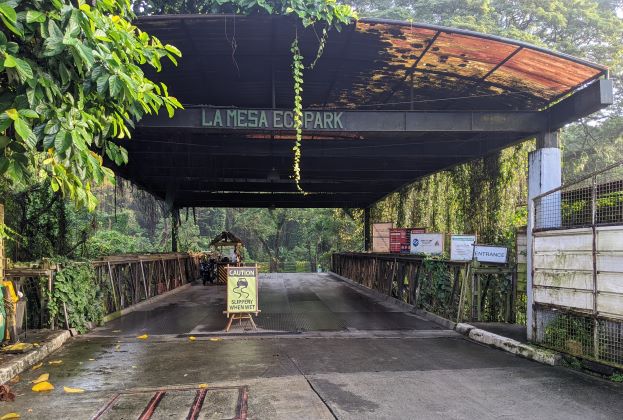
The night clerk, Chaumy, I found to be the most helpful member of the hotel staff. We had brief conversations early each morning about my concerns. He informed me that, although their websites were down and no bookings could be made by phone, there were buses running between QC and Olongapo (adjacent to Subic Bay). Chaumy would call for a taxi to a QC bus terminal on the day of my departure from the hotel. This kind man also reassured me that he would hold onto my bird book if it arrived after I left the area. Somehow, he would figure out how I could get the book if I was still in the Philippines. Both items of concern were ultimately resolved favorably, though each in a rather unexpected manner.

A Grab Inc. taxi driver was given instructions by Chaumy (speaking in Filipino) to take me to the specific terminal in QC where I could find bus transport to Olongapo. For some reason, the taxi driver took me directly to the wrong bus terminal and wished me good luck. Finding that deal totally unacceptable, I convinced him to continue until we found the correct terminal. I agreed to pay a small additional fare. But there was another problem. The driver had no idea where that bus terminal was. So, we simply drove around the city for awhile in heavy traffic until I spotted a bus with a large sign on the windshield: OLONGAPO. Minutes later I was on the bus and headed for Olongapo (3.5 hours) and to the nearby Lighthouse Marina Resort (LMR, 4-Star) in Freeport Subic Bay (10 minutes). I definitely had caught a lucky break. But as we learn to expect in life, a stroke of good luck is sometimes paired with a pinch of bad luck. Sure enough, later that day I received notification that my book had just been received by Spiral Suites Hotel.
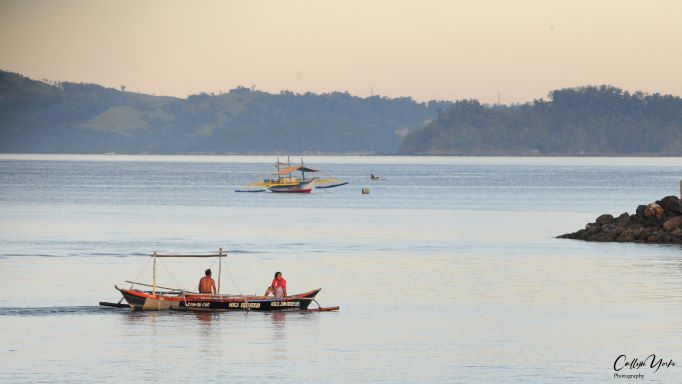
At this point in my journey, I became present to the vast difference in service and facilities between a 3-Star and 4-Star hotel in the Philippines. The LMR manager, learning of my need for that precious Philippine bird book (admittedly, I put on what must have appeared as a mildly amusing act of pitiful desperation), said he saw no problem. He would arrange to have the book picked up from the Spiral Suites in QC and brought back to me at the hotel. Remarkably, the book was in my hands three days later. Cost for the service: $US 2. I believe that is what most of us would call 5+ Star service, anywhere in the world.
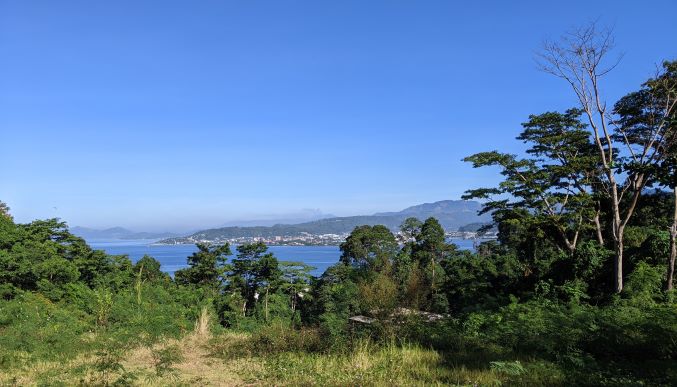
More good news. The average daily lodging cost at LMR, although comparatively high ($105/night, plus tax, breakfast included) was well within my overall trip budget of $120/day (factoring in the low cost of lodging in both QC and Manila).

This meant I would have a very affordable, twelve-day birding trip in the Philippines, at an average daily cost well below what was presented to me for a professionally led tour of only four days. Clearly, it was possible for independent birders to have a productive yet reasonably priced experience in the Philippines, provided that they were open-minded about cultural differences and willing to tolerate a few inconveniences.
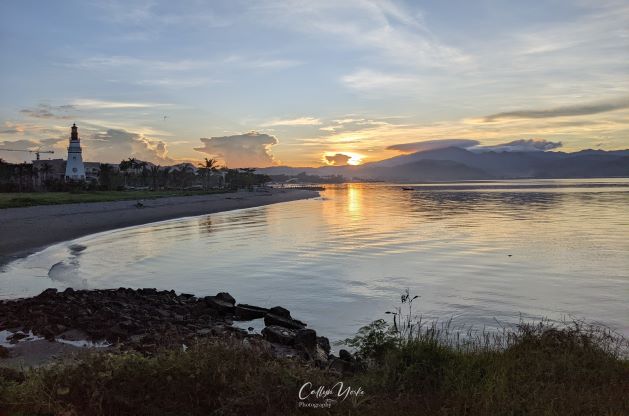
When I mentioned that I would like to hire a car and driver for birding around the area, the LMR manager quickly answered my request by obtaining a SUV and experienced driver. Cost: $US 25 per day. Wait, did I hear that correctly? Yep. And, as a result of the daily excursions by car around Subic Bay, I found a number of endemic bird species for both my life-bird and Philippine trip list.
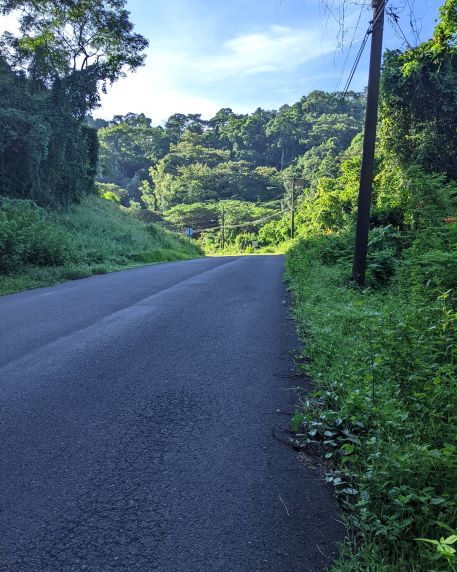
I was also delighted to find that the LMR cooks and kitchen staff had been well trained in the culinary arts. A varied selection of fresh fruit and veggies was available for all meals. And, of course, the service was excellent. On multiple levels, thanks to the exceptionally helpful staff at LMR, Subic Bay was the highlight of my visit to the Philippines.
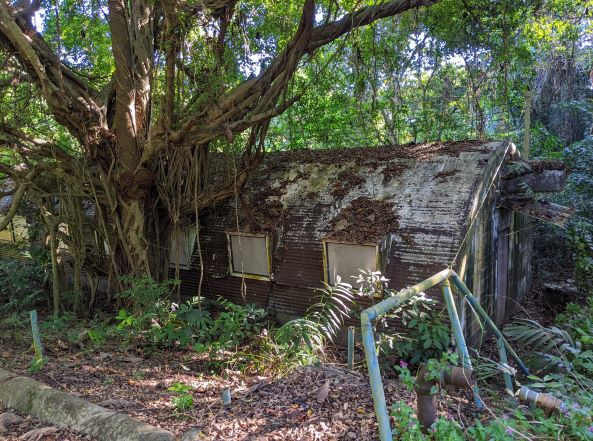
The final leg of my journey, returning to Manila on December 1 for my flight to Saigon the following day, would be spent mostly in transit and summarizing the trip results; it was not expected to be an especially exciting part of my Philippine experience. I should have known better. Traveling in the Philippines could be described by any number of adjectives; dull would certainly not be among them. There were still some unknowns, such as the sort of hotel I had booked in Manila – another 3-Star with decent guest reviews posted online by booking agencies. Would those reviews turn out to be reliable? And, would my driver know how to find his way around Manila?
After a four-hour private car ride ($US 125 – arranged by the LMR manager) from Subic Bay to Manila Bay, we arrived at the Baymont Suites Hotel, located in Baclaran district near the International Airport. The old neighborhood looked desperately run down and definitely an unsafe place to be at night. No matter. I just needed shelter, a room with a bed, table, chair and light, and time to review my field notes in preparation for returning home to Vietnam. My birding days in the Philippines were finished and although weary from a fairly intense schedule of daily fieldwork, I was quite pleased with the results.
The receptionist and armed guard at the Baymont Suites, were friendly and welcoming. The only problem was that I had arrived about four hours before the check-in time and my room was not yet available. The receptionist said the room was still “occupied” and I could wait with my luggage on a vinyl-upholstered chair in a cramped lobby, being mopped as we spoke. In the corner, by the front glass door, a tiny artificial Christmas tree featured a neatly wrapped present. Subsequently, I suspected that the hotel, probably like the Christmas present, was essentially empty and that I was currently the only guest; one of the hotel staff and his girlfriend, had been working things out in the room assigned to me. Okay. Might there be another room available for an early check-in? Yes, except the upgraded room would cost me twice what the original booking was, i.e. $US 17 x 2 = $US 34, breakfast included. No worries. That was still well within my average daily budget for the trip. I paid the additional amount and, carrying my bulky camera bag, climbed three flights of stairs (BTW, a hotel elevator is probably a rare luxury in Philippine 3-Star hotels). Luckily, the clean, well furnished room, was nearly as large as a studio apartment and even had a commanding view of the nitty-gritty street scene below. Altogether, not a bad deal for downtown Manila, and only 3.5 km from the airport.

Looking at Google Maps for Manila Bay, I noticed a natural (green) area next to the bay that was only about 2.5 km from the hotel. It was called, Las Pinas-Paranaque Wetland Park, and appeared to be a likely place to find waterbirds. I made an inquiry with the hotel receptionist about obtaining a taxi to this place, showing her where it was on Google Maps, displayed on my cell phone. She had never heard of it. Further, upon researching Grab taxi destinations in the area, she found that it wasn’t listed and therefore could not be reached by taxi. I was out of luck there. Hmm. Could there be a nearby place that was on the Grab menu? There was indeed — a toll road station for upgrading commuter credit cards, was only about 200m from the entrance to the park. I got my gear together and within thirty-minutes, found myself at the park entrance.
The park entrance sign (photo) indicated that the area had been designated as an important wetland ecological preserve, suggesting, at least to me, that birders would be welcomed. But as I approached a badly damaged, rusted gate, about 100m beyond the entrance sign, two young Filipino guards came out of a small security building and informed me that I could not enter the park without a letter of permission. As I pondered my options, which seemed vanishingly distant, many Filipinos passed through the half-opened gate, going in both directions. Apparently, only foreigners were required to secure permission for entry. I asked if I could pay a “special fee” and gain entry. The two guards glanced at each other, hesitated a moment, then politely refused the cash offer (a bribe, really). One of them remarked to me, “I like my job.” Understood. The only option left for me was to bird from the short entrance road, peering through openings in the mangrove into the distant, polluted tidal lagoon and exposed mudflats.
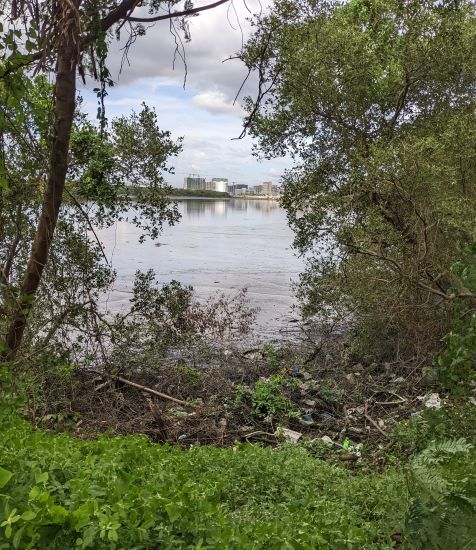
Waterbirds were present, though most were out of binocular and camera range in the relatively undisturbed northeast corner of the tidal lagoon. The mangrove, mudflats and lagoon were strewn with trash, yet remained attractive to an interesting diversity of waterbirds. Except for an abundance of egrets and herons (photo), most of the shorebirds occurred in single-digit numbers.

After about two hours walking back and forth on the roadway, I had several more species for my Philippine trip list, including Little-ringed Plover, Black-winged Stilt, Marsh Sandpiper and Wood Sandpiper. By the late afternoon hour, feeling the cumulative physiological effects of heat (32 C) and humidity (85%), I was thoroughly fatigued, though satisfied with the birding, despite never having actually entered the park.
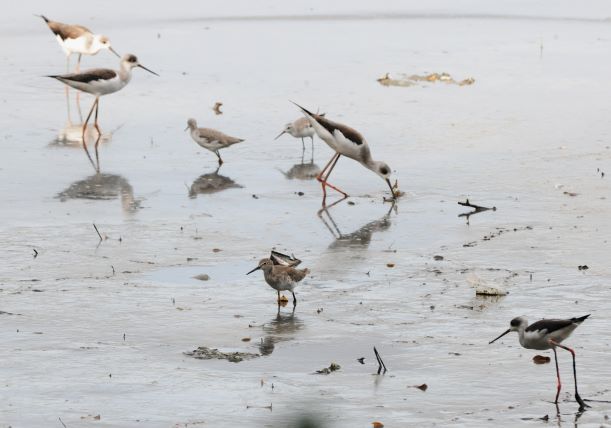
The last-minute birding opportunity in Manila Bay was an unexpected bonus. Eventually, after an hour of inquiries and assistance from some very kind ladies in the commuter toll card office, I secured a taxi back to the hotel, via a narrow shoreline road. As darkness and a heavy rain clouds approached, I noted briefly, many more waterbirds crowded on the tidal mudflats and edges of the mangrove in the northeastern section of the wetland park, including a Rufous Night-Heron, which was another new species for the trip list and possibly a life-bird. The driver was friendly, enthusiastic and cooperative, stopping several times, so that I could get out and see the birds.
The Baymont Suites Hotel was situated on a one-car-wide alleyway with quite a lot of action, especially after dark. Sirens, vehicle horns, domestic squabbles, and unmuffled motorbikes, blared on and on until well after midnight. I found it difficult to fall asleep with all the commotion. When things finally quieted down at around 2:30 am, I was still wide awake and chanced to gaze down at the dimly lit street. Several partially clothed people, laying on sheets of cardboard, were sound asleep. Rats, cats and dogs scavenged in the street. Shop doors and windows were sealed shut. Manila was down for the count. In a few more hours I would be in a taxi, mostly in motionless gridlock, replaying vivid recollections of a remarkable birding trip to the Philippines.
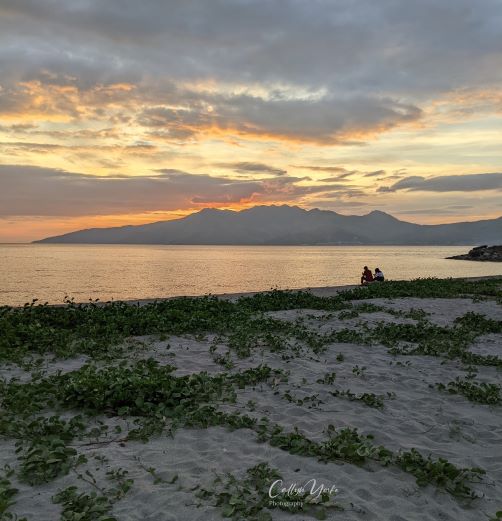
On The Road: Survey Areas, Materials and Methods
I visited three principal areas on the island of Luzon, Philippines in the following chronological order: 1) La Mesa Eco-Park, Quezon City; 2) Subic Bay; and 3) Las Pinas-Paranaque Wetland Park, Manila (see also the Introduction for further details on these survey locations). Surveys were made mainly during the morning hours (0600-1000 hrs.), except for Subic Bay and Las Pinas-Paranaque Wetland, where one or more late afternoon surveys were made. For all surveys, I used a Zeiss 10 x 42 binocular and Nikon D3X camera, fitted with a Nikon 200-500 mm IF AF VR lens. A Google Pixel 3X cell phone camera was used for general scenery and site documentation. Field surveys were made mostly on foot, walking slowly and stopping frequently to observe and photograph birds. A pocket notebook was used to record sightings; notes were recopied to a loose-leaf binder format later the same day. For species of uncertain identity, I referenced reliable online resources, i.e. Cornell University, Birds of the World, and my own digital photos. If a bird’s identity could not be positively determined, it was given a ? in the Annotated Bird Lists (see below).
1. La Mesa Eco-Park and Fairview, Quezon City
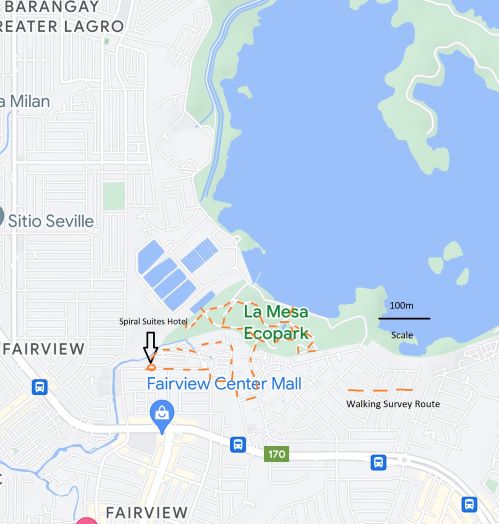
La Mesa Eco-Park (LME), Including the adjacent suburbs of Fairview (FS). Dates of surveys: November 20, 21, 22, 23, 24, 2022. My survey route began and ended in FS, going to and from LME, usually returning by motorbike-sidecar (‘trike’). At the park, I began at the bridge entrance, where a daily usage fee (50 P: 1 $US = 57 P) was collected and my hand stamped with an ink logo. The bridge entrance area (see photo in the Introduction) was sometimes productive for birdlife, particularly following rains. Proceeding into the park, the roadway traverses a mature patch of closed-canopy, lowland rainforest with a small stream, then opens into a series of clearings with buildings and ornamental plantings. The main pathway through the park, beyond the headquarters, is split into a web of smaller pathways through mostly abandoned recreational areas; one large, lily pond (about 1 ha) is in this area, bordered by tall, overhanging broad-leaved evergreen trees, which consistently attracted mixed species flocks. The La Mesa watershed reservoir, bordering the northeastern section of the park (see following map), includes a fenced road and dam; a grassland-scrub embankment forms the lower part of the dam structure within the park. This area provided habitat for some open-country birds, e.g. Rufous-headed Bee-eater, Brown Shrike, White-breasted Woodswallow and Striated Grassbird. Unmaintained pathways into more remote (often closed) southeastern areas of the park, were attractive to birds, particularly during brief spells of sunshine. Weather during most of the surveys was predominately overcast with intermittent light rain (19C to 31C). Winds were light (2-10 kph) from the NE and NW. Bird activity and detectability was highest during brief periods of sunshine; mixed species flocks were most commonly encountered in the warmer, late morning hours. Visitors were almost always present during the surveys, sometimes numbering in the hundreds. Nearly constant human presence in the park has resulted in most of the birds being fairly well habituated to disturbance and thus relatively easy to approach for photographs.
Annotated Bird List: La Mesa Eco-Park and Fairview Suburbs, Philippines: November 20-24, 2022 Callyn Yorke
Abundance: Numbers following each species entry are the maximum count for a single survey, when multiple surveys of an area were made Age, sex and molt (when known): ad = adult; imm = immature; m = male; f = female; bsc plmg = basic (non-breeding plumage; alt plmg = alternate (breeding) plumage.
Frequency: C = Common, i.e. found during all or more than half of the surveys in appropriate habitats; UC = found during fewer than half of the surveys; R = found only once.
Localities & Distribution: La Mesa Eco-Park (LME); Fairview suburbs (FS); ubiquitous in the appropriate habitat (ubiq).
Ecology and Behavior: aerial insect hawking (ah); taking fruit, berries or parts of flowers (fr); gleaning insects from foliage (ig); probing into surface (pr); estimated height (m) above ground (agl); gregarious (greg); mixed-species flock (msf).
Systematics and Nomenclature used herein, is an amalgam of Avibase, International Ornithological Congress (IOC) and current (2022) online resources, i.e. Birds of the World, Cornell University, USA.
* Philippine Endemic Species are listed in Boldface Type
- Red Junglefowl Gallus gallus 1 (m), possibly semi-domesticated, walking warily at the edge of the forest, UC, LME
- Feral Rock Pigeon Columba livia 6 greg. C, FS
- Red Turtle Dove Streptopelia tranquebarica 2 on utility wire, UC, FS
- Eastern Spotted Dove Spilopelia chinensis 2 on utility wires, C, LME
- Zebra Dove Geopelia striata 6 vocal, greg. often paired on the ground, flushed to trees, C, ubiq.
- Gray-rumped Swiftlet Collocalia marginata 30 greg. flying 5-50 m agl over forest and open areas, C, ubiq.
- Barred Rail Hypotaaenidia torquata 2 walking warily on edge of pathways and bare ground, quickly taking cover when approached, UC, LME
- Black-crowned Night-Heron Nycticorax nycticorax 2 (ad, imm) flying over embankment and the dam, UC, LME
- Purple Heron Ardea purpurea 1 (ad) flying over drainage area; one wading in small, marshy stream drainage in northwest section, UC, LME
- Little Egret Egretta garzetta 2 wading in small stream and wetlands, C, LME
- Eastern Cattle Egret Bubulcus coromandus 3 greg. in flight over drainage behind the Fairview elementary school at dusk, R, FS
- Common Sandpiper Actitis hypoleucos 1 at edge of concrete spillway in NW lower drainage, UC, LME
- Whiskered Tern Chlidonias hybrida 1 flying over drainage behind the Fairview elementary school, R, FS
- Eastern Honey Buzzard Pernis orientalis 1 flying NE at about 75 m agl over the park entrance, R, LME
- Rufous-crowned Bee-eater Merops americanus 8 greg., aerial hawking from utility wires over the dam embankment and tree limbs in forest clearings, C, LME (photo).
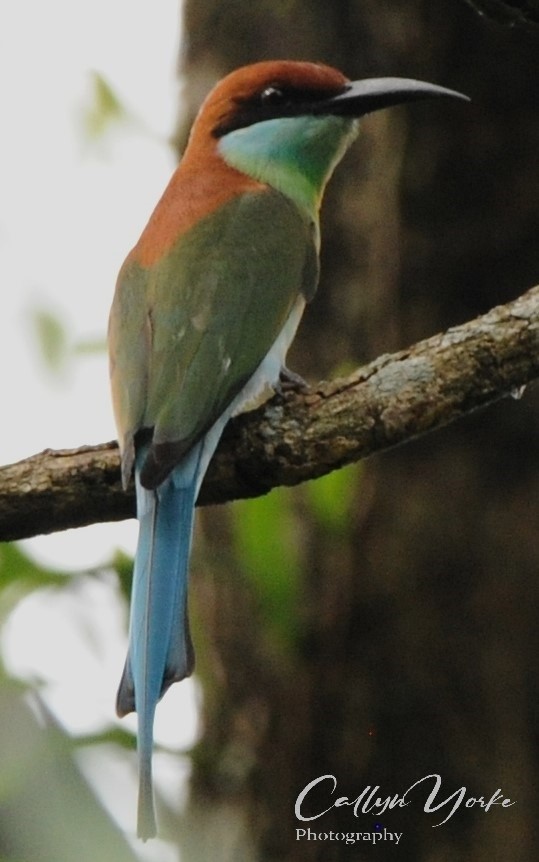
- Blue-tailed Bee-eater Merops philippinus 2 greg. a pair sallying to and staying perched in shrubs on the dam embankment, R, LME
- Common Kingfisher Alcedo atthis 2 individuals, readily flushed from perches on snags and stumps in the water, UC, LME (photo).
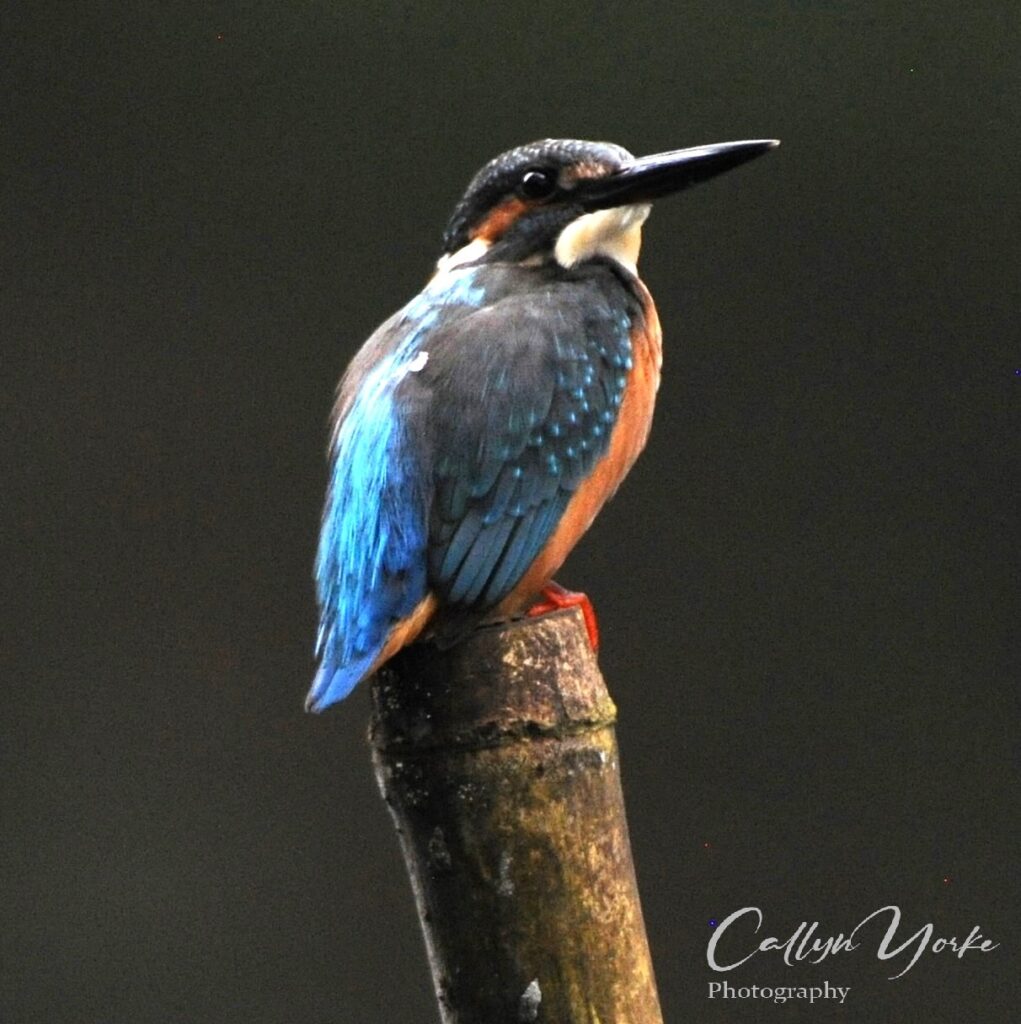
- Collared Kingfisher Todiramphus chloris 2 individuals perched on low limbs of large trees in clearings and near water, C, LME.
- Philippine Pygmy Woodpecker Yungipicus maculatus 2 (m,f) foraging on bark of small diameter tree limbs, msf, R, LME (photo).
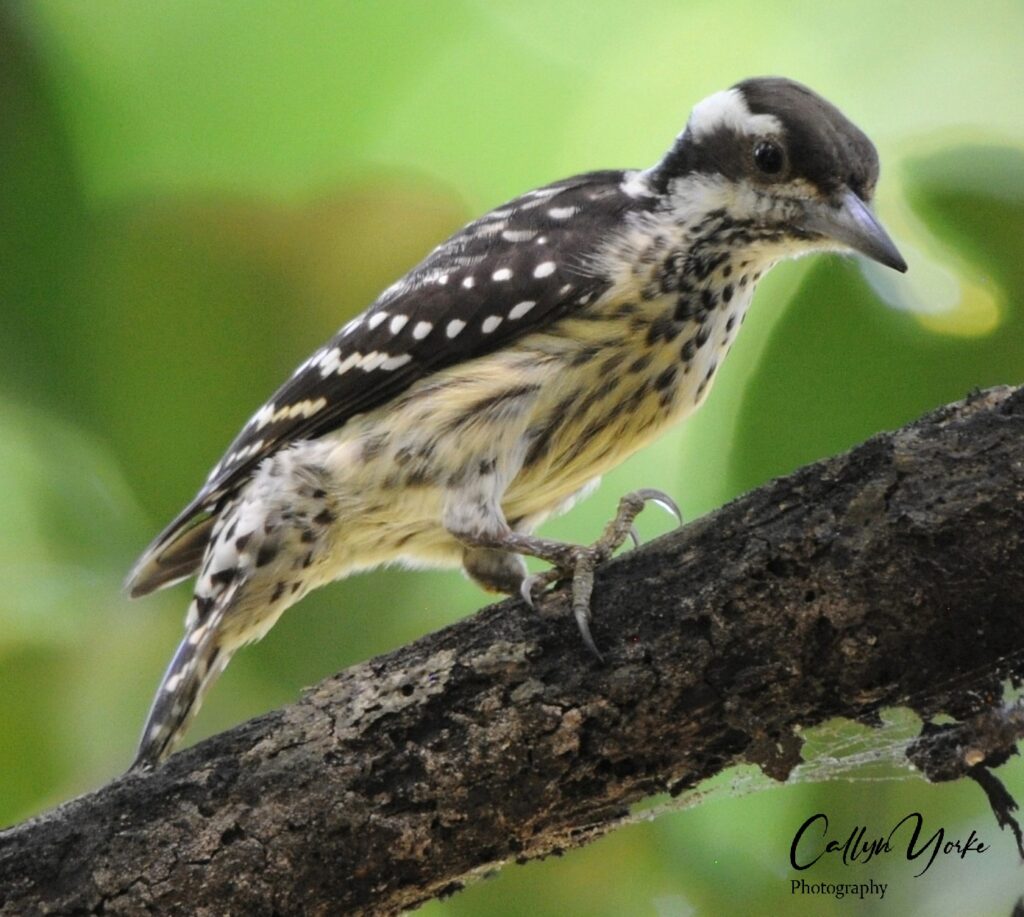
- Golden-bellied Gerygone Gerygone sulphurea 5 greg. ig. in canopies of tall broad-leaved trees, sometimes in msf with other insectivorous birds, e.g. ASMI and LOWI, C, LME
- Black-naped Oriole Oriolus chinensis 6 vocal, greg. pairs in canopies of tallest forest trees, C, LME
- Ashy Minivet Pericrocotus divaricatus 5 sometimes vocal, consitently greg. ig., usually in msf with other, small insectivous species in the canopy and subcanopy of broad-leaved evergreen trees, forest interior and edge, C, LME (photo).
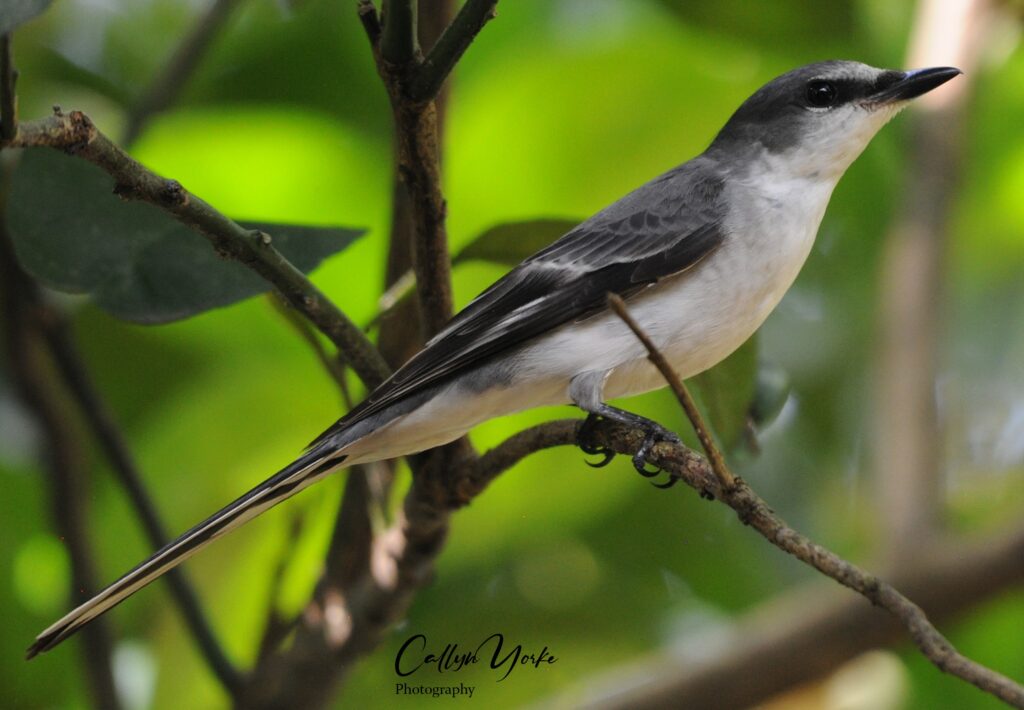
- Pied Triller Lalage nigra 1 in msf with other, insectivorous birds, e.g. LOWI, ASMI, R, LME
- White-breasted Woodswallow Artamus leucorynchus 5 greg. ah from utility wires over dam embankment, C LME (photo).

- Philippine Pied Fantail Rhipidura nigritorquis 4 vocal, greg. pairs often in msf with other insectivorous birds in lower to upper forest levels, gardens C, LME, FS

- Philippine Brown Shrike Lanius cristatus lucionensis 3 sallying from low to mid-level limbs to ground at edges of clearings, C, LME (photo).
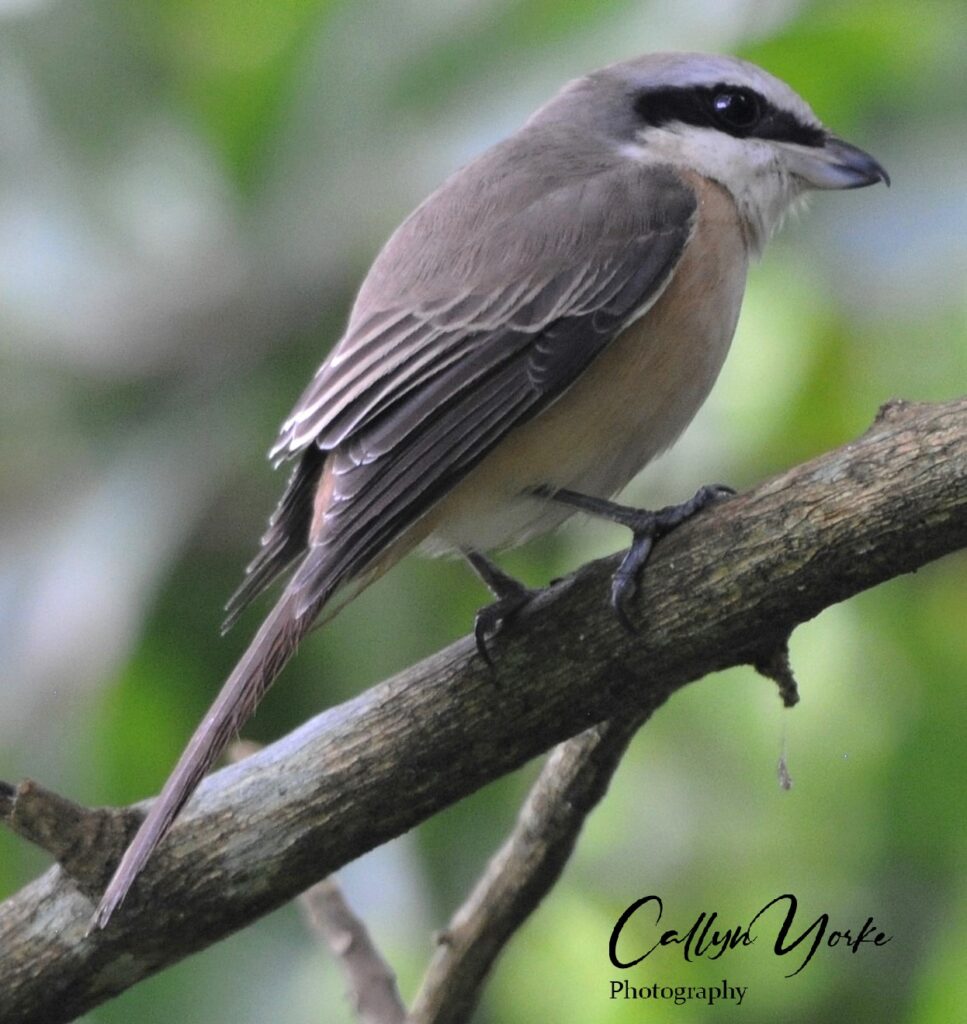
- Philippine Jungle Crow Corvus macrorhynchos philippinus 8 vocal, greg. pairs and trios in forest canopy, shy and easily flushed; not seen on ground, C, LME (photo).
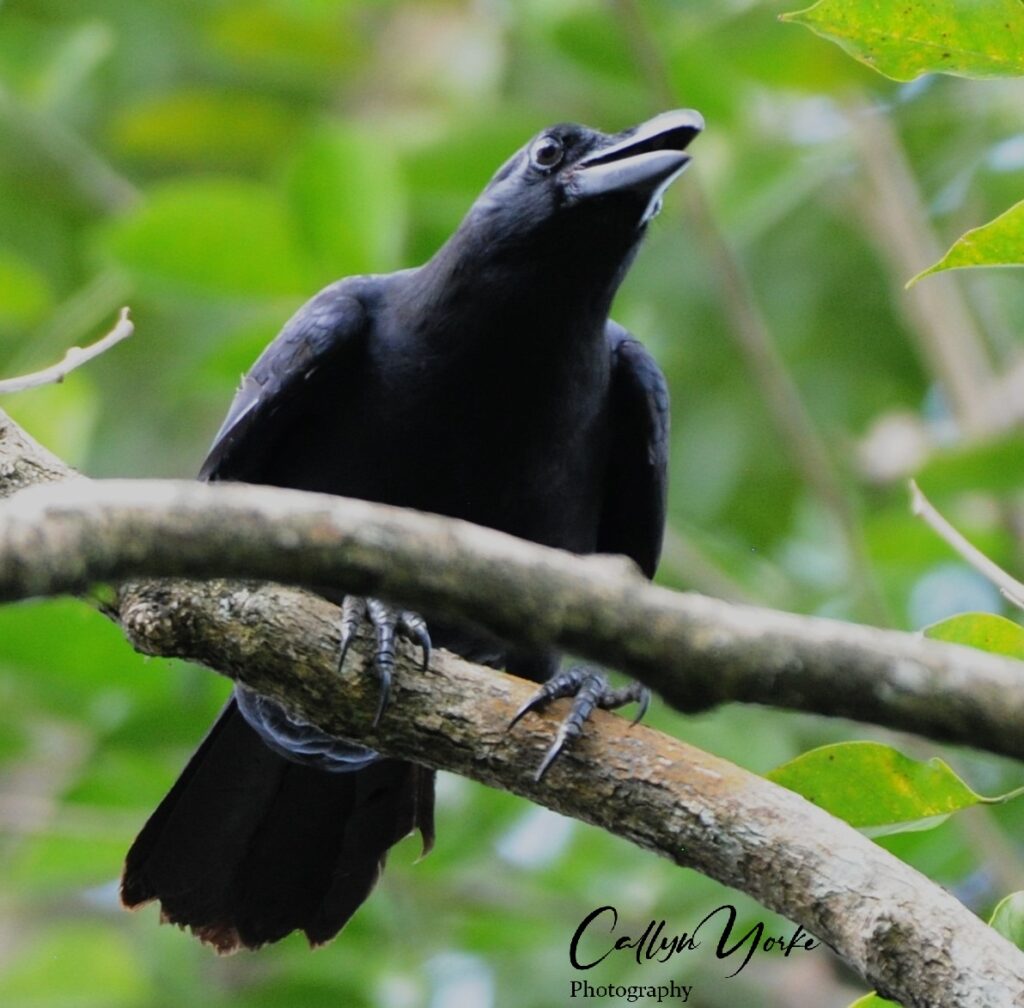
- Elegant Tit Pardaliparus elegans 4 (ad, imm) greg. in msf with PPWO, ASMI, middle to lower levels at edge of forest, foraging on seeds and nuts in deciduous trees, UC, LME
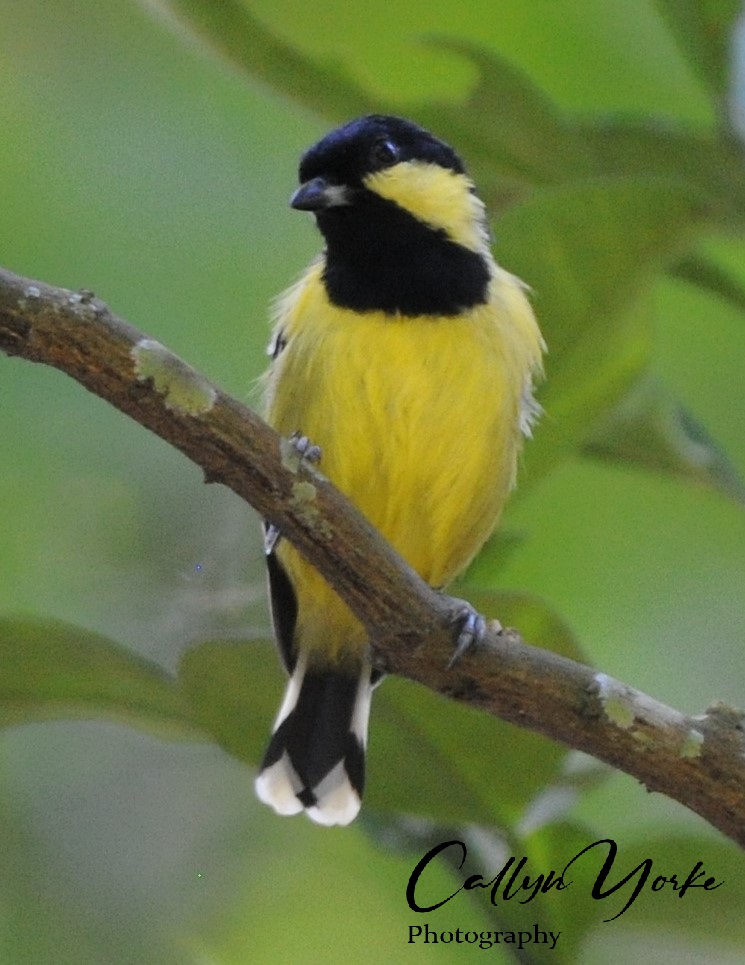
- Green-backed Tailorbird Orthotomus chloronotus 4 vocal (unseen) in forest understory and open shrubland, C, LME
- Striated Grassbird Megalurus palustris 2 vocal, singing on utility wire over dam embankment grassland-scrub, C, LME
- Pacific Swallow Hirundo tahitica 2 flying 2-5m agl over open fields of the dam embankment, UC, LME
- Eurasian Barn Swallow Hirundo rustica 6 greg., flying 1-30m agl over open areas, C, LME, FS
- Philippine Yellow-vented Bulbul Pycnonotus goiavier 8 vocal, greg. foraging on fruiting shrubs and trees at all levels, C, ubiq. (photo).
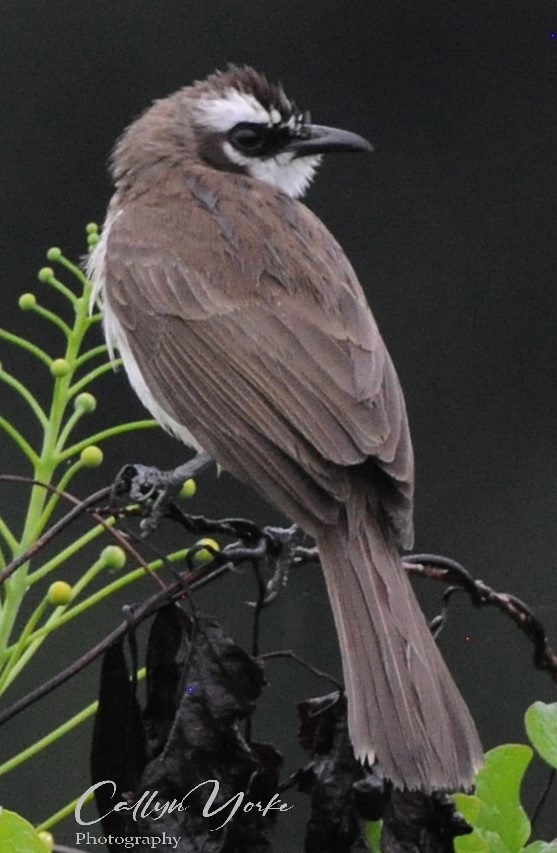
- Arctic Warbler Phylloscopus borealis 1 ig in outer canopy foliage of mature broad-leaved evergreen trees, UC, LME
- Lowland White-eye Zosterops meyeni 3 ig in outer canopy of mature broad-leaved eevergreen trees, often in msf with other insectivorous birds, e.g. GBGE and ASMI, C, LME
- Stripe-headed Rhabdornis Rhabdornis mystacalis 2 (m,f) a pair probing into bark and axillary cavities of broad-leaved understory trees; Rhabdornis is currently placed in the starling family (Sturnidae), which is questionable. The morphology, behavior and ecology suggests to me, that Rhabdornis would be more accurately assigned to a separate and unique passerine family, or perhaps to the Meliphagidae (Honeyeaters); R, LME.
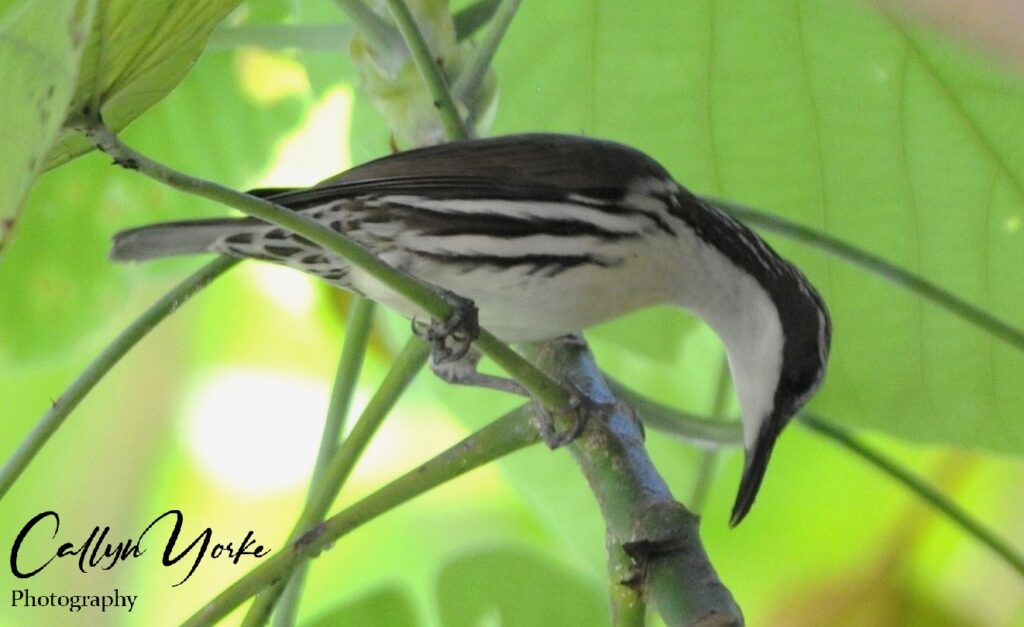
- Philippine Magpie Robin Copsychus mindanensis 2 a vocal pair in the forest understory and subcanopy, UC, LME (photo)
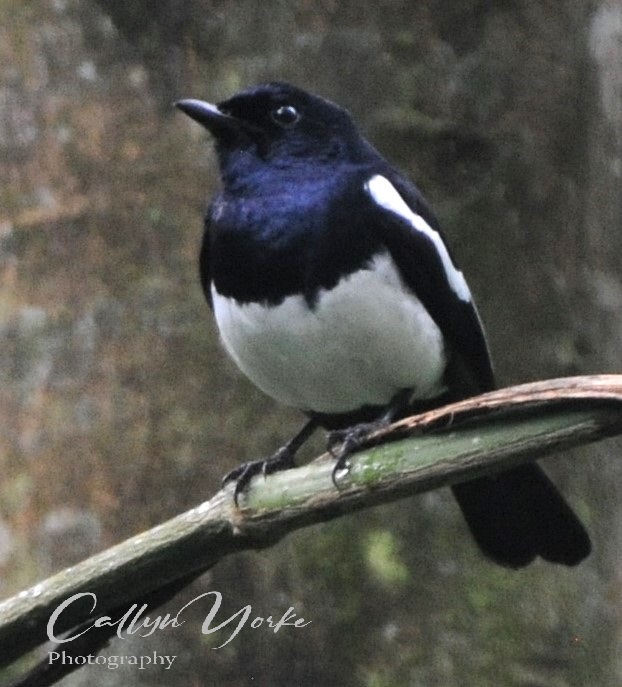
- Gray-streaked Flycatcher Muscicapa griseisticta 1 sallying from exposed, horizontal limbs at middle to upper levels of mature trees at the forest edge, UC, LME
- Garden (Olive-backed) Sunbird Cinnyris jugularis 2 (m,f) vocal visiting flowering shrubs and trees at the edge of the forest and in gardens, C, LME, FS
- Scaly-breasted Munia Lonchura nisoria 5 greg. in open fields and forest clearings with tall grasses and shrubs, C, LME
- Eurasian Tree Sparrow Passer montanus 20 (m,f) vocal, gregarious, opportunistic seed-eaters and scavengers, C, LME, FS (photo).
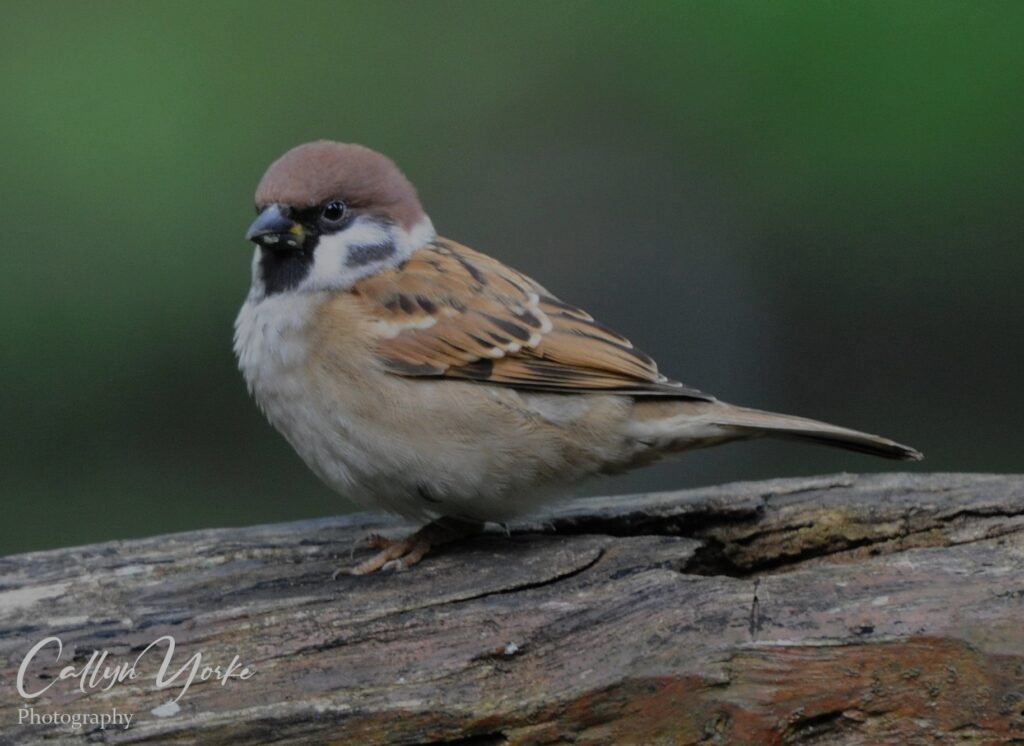
2. Subic Bay Area
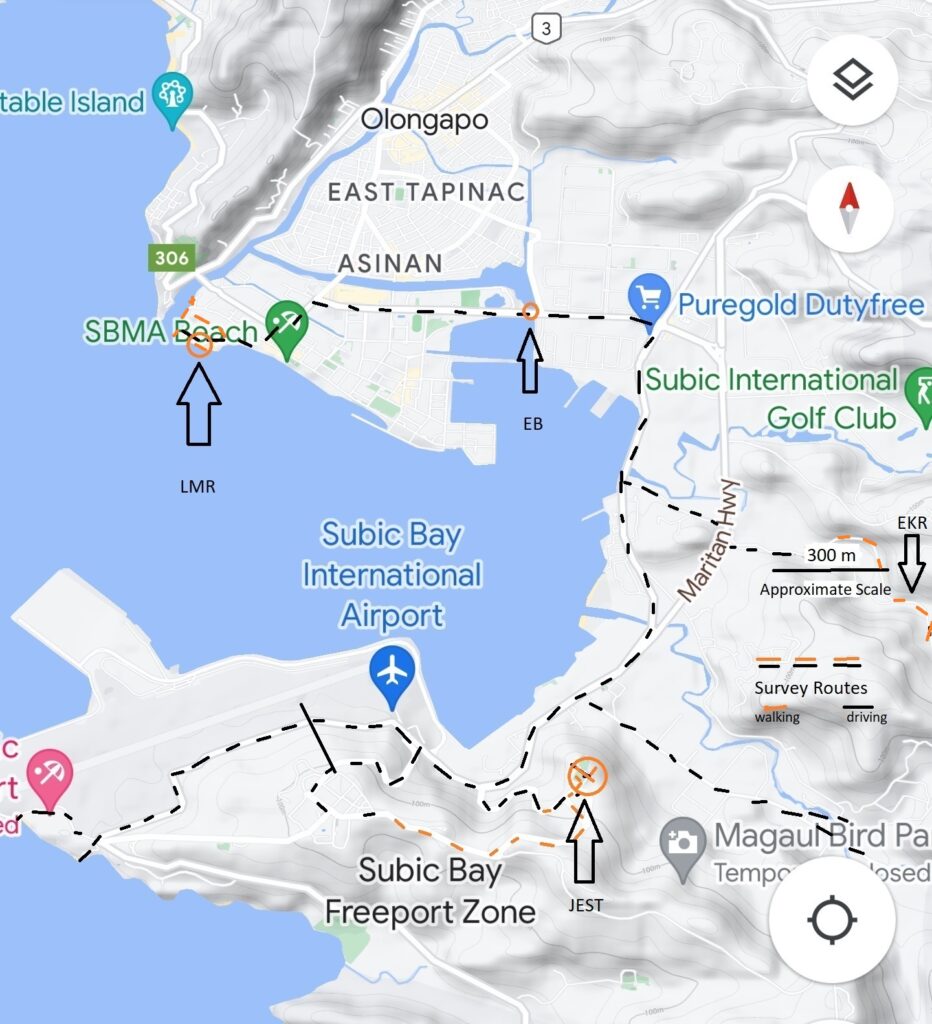
Subic Bay Area Dates of Surveys: November 25, 26, 27, 28, 29, 30, 2022. Daily walking surveys around the Lighthouse Marina Resort, visually surveying from shore, about a 2 km across the bay; landward, covering about 3 ha, including shoreline, breakwater, open fields with scattered shrubs and clumps of tall grass, resort gardens with ornamental palms and an assortment of flowering shrubs and trees (LMR).
An abandoned US military base – jungle survival training camp in the south bay hills, including a 1km section of roadway through patchy lowland forest edge and second-growth, a eucalyptus grove, mature pines, and overgrown gardens with assorted ornamental palms and flowering shrubs (JEST – four morning surveys, 110 m elevation, visually covering about 10 ha).
El Kabayo Road and Zambales Road – 2 km walking surveys along roadways through mature secondary-lowland and foothill rainforest (20 – 100 m elevation) with small streams, grassy clearings, pasture, farms, homesteads with ornamental flowering trees and shrubs (EKR – three morning driving/walking surveys, visually covering about 40 ha).
Bridge walkway over a harbor-village estuary at 14th Street and Rizal Highway – I made brief, daily drive-by and stationary surveys from the bridge, mainly of the northern section of a polluted, trash-strewn estuary with fringing mangrove, mudflats and a shallow islet (EB).
Weather during the surveys was predominately fair and warm (25C to 32 C) with occasional morning and afternoon low clouds, usually clearing by 0800 hrs. Winds were variable, increasing in the afternoon, ENE, NW, 1-25 kph. Out of town traffic (pedestrian, bicycle, motorbike and automobile) was generally light. Rural roads were comparatively quiet in the early morning hours (0600-0730 hrs.)
Annotated Bird List: Subic Bay Area, November 25-30, 2022 Callyn Yorke
Abundance: Numbers following each species entry are the maximum count for a single survey, when multiple surveys of an area were made Age, sex and molt (when known): ad = adult; imm = immature; m = male; f = female; bsc plmg = basic (non-breeding plumage; alt plmg = alternate (breeding) plumage.
Frequency: C = Common, i.e. found during all or more than half of the surveys in appropriate habitats; UC = found during fewer than half of the surveys; R = found only once. Note: these non-parametric categories are intended primarily for areas surveyed more than twice.
Localities & Distribution: Lighthouse Marina Resort (LMR); Jungle Environment Survival Training area (JEST); El Kabayo and Zambales Roads (EKR); Harbor estuary (EB); ubiquitous in the appropriate habitat (ubiq).
Ecology and Behavior: aerial insect hawking (ah); taking fruit, berries or parts of flowers (fr); gleaning insects from foliage (ig); probing into surface (pr); estimated height (m) above ground (agl); gregarious (greg); mixed-species flock (msf).
Systematics and Nomenclature used herein, is an amalgam of Avibase, International Ornithological Congress (IOC) and current (2022) online resources, i.e. Birds of the World, Cornell University, USA.
* Philippine Endemic Species are listed in Bold Face type.
- Feral Rock Pigeon Columba livia 5 greg. mostly in vacant lots in town, C, ubiq.
- Eastern Spotted Dove Spilopelia chinensis 1 on utility wire at edge of town, UC, ubiq.
- White-eared Brown Dove Phapitreron leucotis 1 second-growth at edge of clearing, UC, JEST
- Philippine Green Pigeon Treron axillaris 3 in flight, about 10 m above the forest, UC, EKR, JEST
- Green Imperial Pigeon Ducula aenea 2 a pair perched in canopy of isolated, tall tree at edge of secondary forest, UC, JEST (photo).
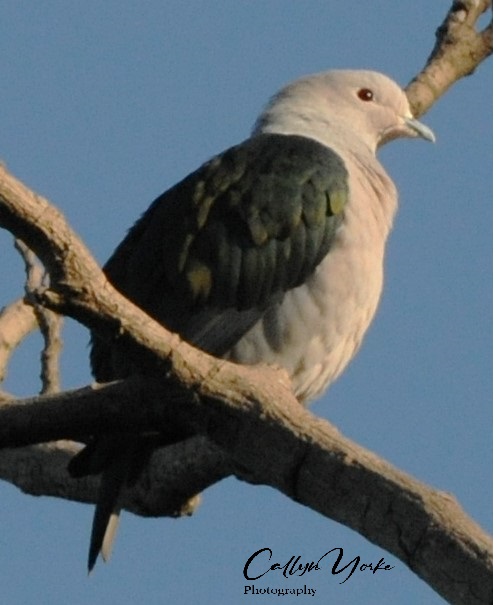
- Zebra Dove Geopelia striata 8 greg. vocal, often flushed from ground and into adjacent trees at edge of clearings, C, ubiq.
- Pygmy Swiftlet Collocalia troglodytes 3 greg. flying 20 -30m agl over open areas, UC, LMR
- Gray-rumped Swiftlet Collocalia marginata 60 loosely gregarious, 5- 100 m agl, C, ubiq.
- Asian Palm Swift Cypsiurus balasiensis 2 5 -20 m agl over shore and adjacent bay waters, UC, LMR
- Philippine Coucal Centropus viridis 2 vocal (mostly unseen) in tall second-growth, vine-covered trees at edges of clearings, C, JEST, EKR
- Lesser Coucal Centropus bengalensis 1 vocal (unseen) second-growth and forest edge, C, JEST
- White-breasted Waterhen Amaurornis phoenicurus 1 running across roadway and into marshy area, UC, EKR
- Black-crowned Night-heron Nycticorax nycticorax 3 (ad, imm) edge of mangrove, C, EB
- Gray Heron Ardea cinerea 1 in estuary shallows at low tide, UC, EB
- Eastern Great Egret Ardea modesta 2 in estuary shallows, C, EB
- Intermediate Egret Ardea intermedia 7 greg. feeding in pasture with horses, C, EKR
- Little Egret Egretta garzetta 2 wading in shallows at edge of breakwater and in estuary, C, LMR, EB
- Black-headed Gull Larus ridibundus 5 (bsc. plmg.) greg, flying low, circling the inner bay, R, LMR
- Philippine Serpent Eagle Spilornis holospilus 3 (ad, imm), greg., soaring about 50 m agl over forest and clearings, UC, JEST (photo).
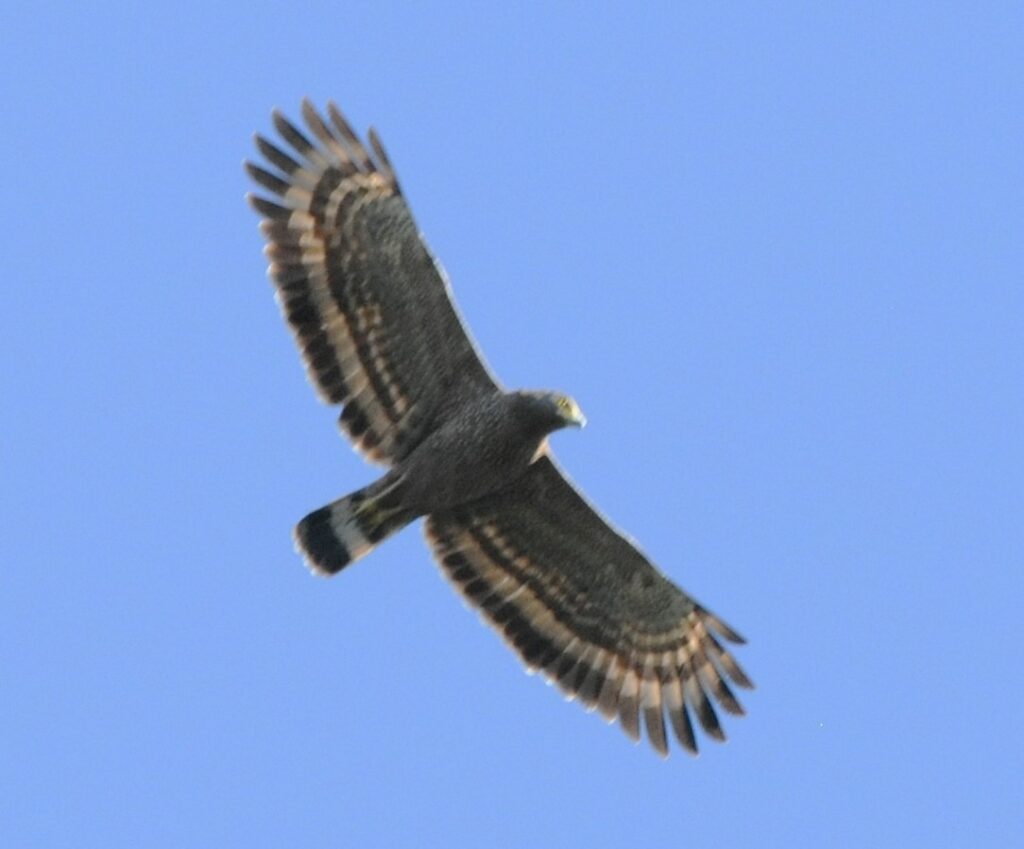
- Brahminy Kite Haliastur indus 2 (ad, imm) flying 2-80m agl over bay and adjacent hill forest, C, ubiq.
- Luzon Hornbill Penelopides manillae 2 (m,f) in subcanopy at edge of forest; a pair taking turns feeding on palm fruits, UC, JEST (photo).
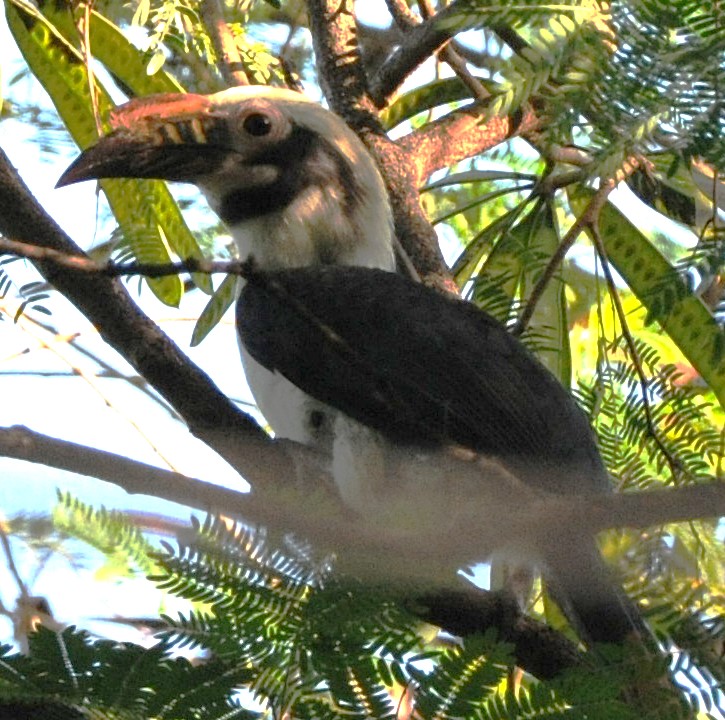
- Rufous-crowned Bee-eater Merops americanus 4 greg. on utility wires over gardens, fields and at edges of secondary forest, C, ubiq.
- Oriental Dollarbird Eurystomus orientalis 2 perched on tall snags at edge of forest, UC, JEST
- Common Kingfisher Alcedo atthis 1 flying low over estuary, R, EB
- Brown-breasted Kingfisher Halcyon gularis 2 roadside stream second-growth and perched in tall trees at edge of forest, UC, EKR
- Collared Kingfisher Todiramphus chloris 2 near water on low snags and limbs, shoreline and magrove, C, ubiq. (photo).
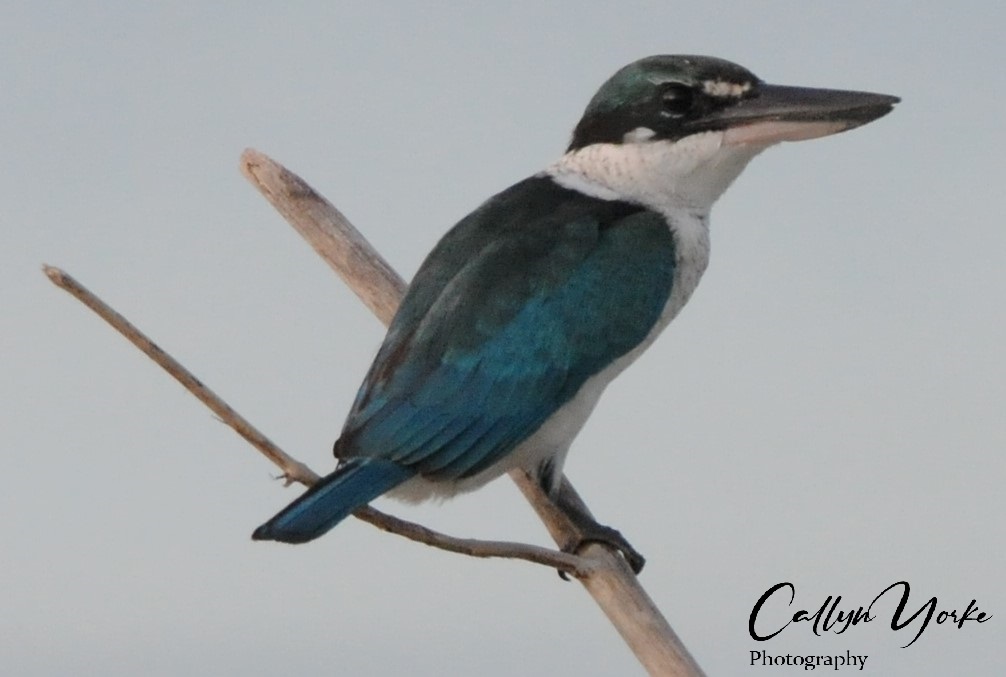
- Coppersmith Barbet Psilopogon haemacephalus 2 vocal, in tall snags at edge of forest and second-growth, C, JEST
- Luzon Flameback Chrysocolaptes haematribon 1 (m) ascending trunk and large limbs of emergent rainforest tree, UC, JEST
- Northern Sooty Woodpecker Mullerpicus funebris 1 (f) pr on main trunk of 10 m broad-leaved tree at edge of secondary-growth clearing, R, JEST (photo).
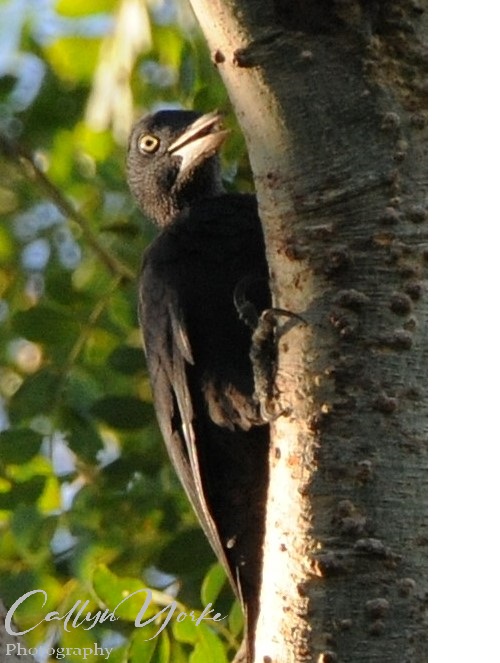
- Guaiabero Bolbopsittacus lunulatus 5 greg. in canopy of fruiting tree at the edge of a secondary forest, C, JEST
- Philippine Hanging Parrot Loriculus philippensis 4 greg. in canopy of fruiting tree at edge of roadway clearing, UC, EKR
- Philippine Black-naped Oriole Oriolus chinensis 5 vocal, greg. in fruiting trees at edge of second-growth and forest, C, JEST, EKR
- Ashy Minivet Pericrocotus divaricatus 8 greg. ig in canopies of mature pines, C, JEST
- Bar-bellied Cuckooshrike Coracina striata 4 greg., vocal, sallying from mid to upper level of eucalyptus, UC, JEST
- White-breasted Woodswallow Artamus leucorynchus 5 greg. circling 30-60m agl above forest and open areas, C, JEST, EKR
- Philippine Pied Fantail Rhipidura nigritorquis 2 a pair moving rapidly near the ground at edge of mangrove, R, EB
- Balicassiao Dicrurus balicassius 3 vocal, greg. in roadside trees in second-growth, UC, JEST (photo).
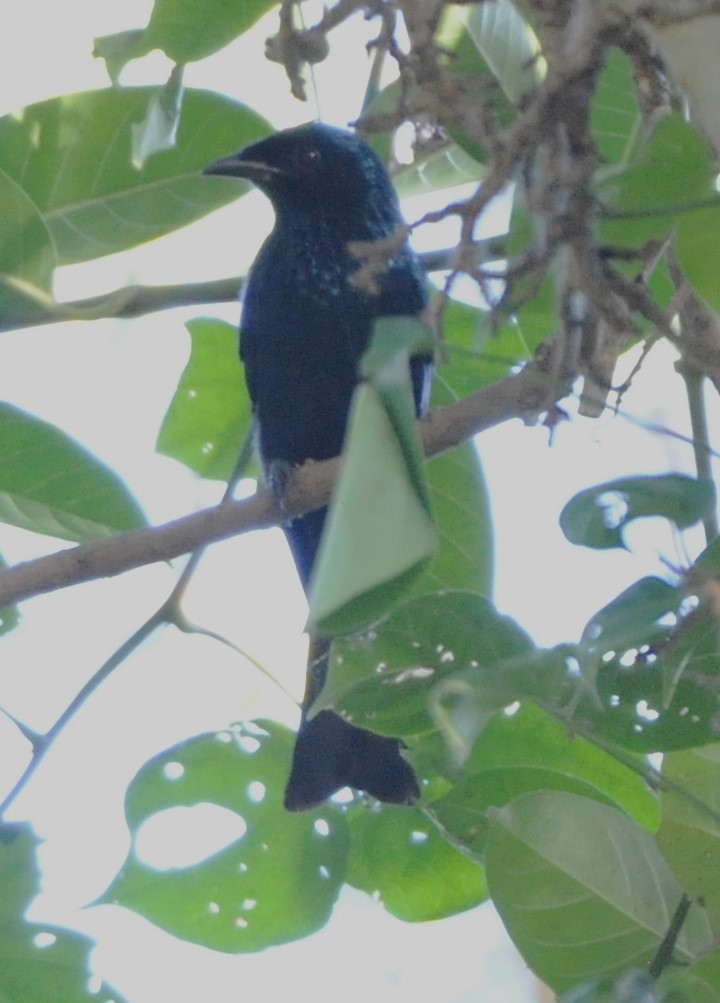
- Northern Brown Shrike Lanius cristatus cristatus 2 edges of large clearings, C, LMR, EKR
- Philippine Brown Shrike Lanius cristatus lucionensis 4 low to mid-level perches in small trees and shrubs in second-growth and edge of forest, C, ubiq.
- Philippine Long-tailed Shrike Lanius schach nasutus 2 vocal, individuals in shrubs and trees at the edge of clearings and gardens, C, LMR (photo).
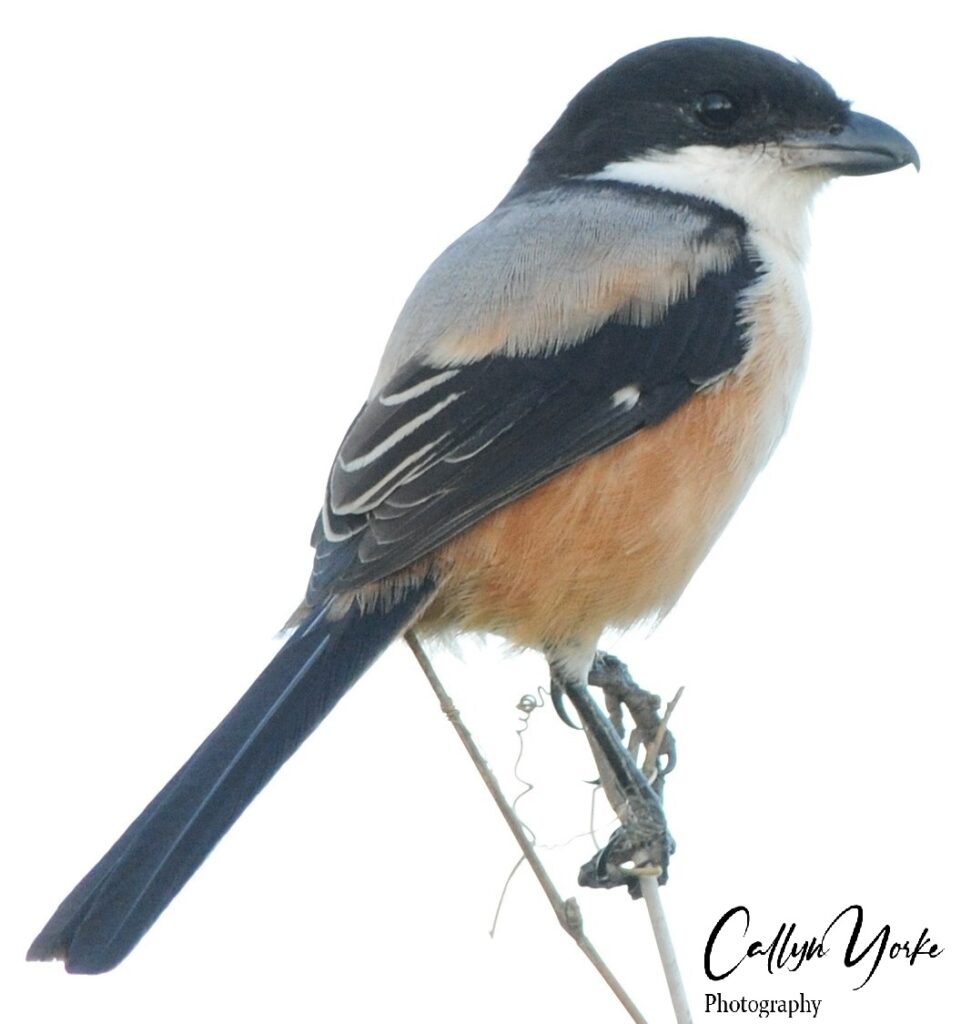
- Philippine Jungle Crow Corvus macrorhynchos philippinus 5 vocal, greg. edge of secondary forest and areas with mature trees, C, ubiq.
- Green-backed Tailorbird Orthotomus chloronotus 3 vocal (unseen) in dense, vine-tangled second-growth bordering clearings, C, JEST, EKR
- Striated Grassbird Megalurus palustris 2 highly vocal from exposed perches at daybreak and dusk; pairs in patches of tall grass and shrubs in open areas near water, C, LMR, EKR (photo).
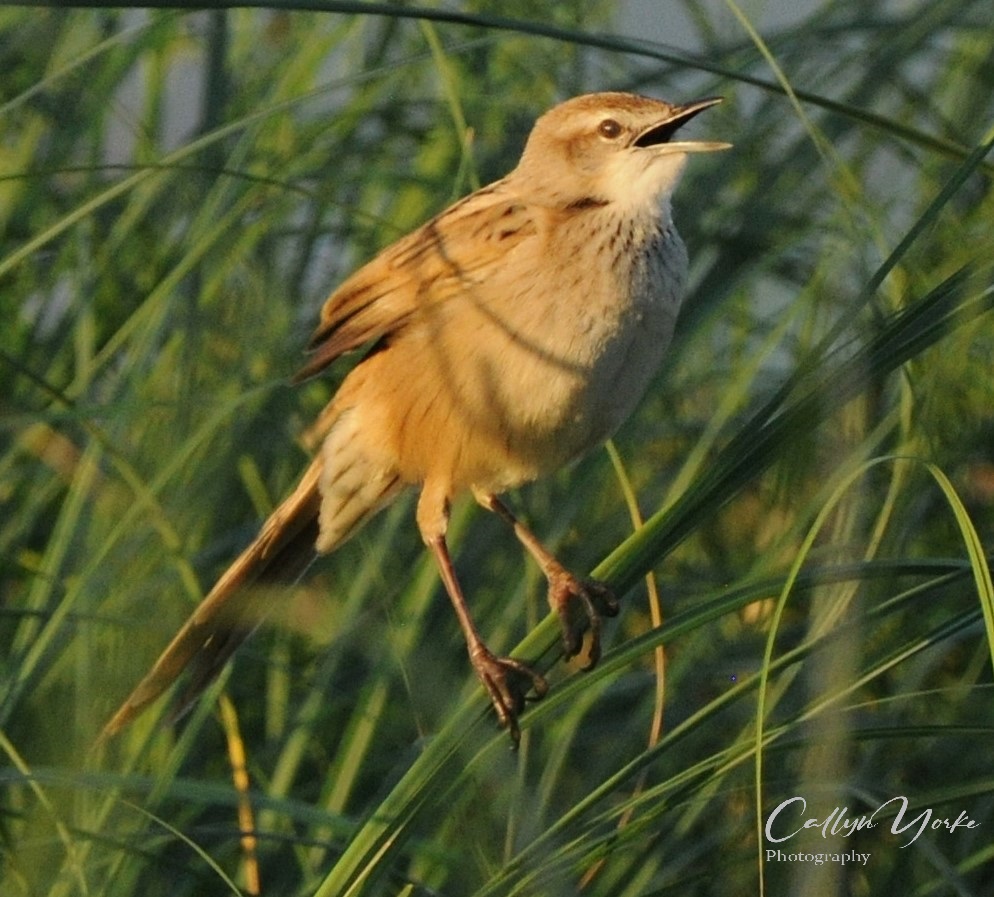
- Asian House Martin Delichon dasypus 2 a pair on a utility wire and flying 10m agl above clearings and second-growth, R, EKR
- Striated Swallow Cecropis striolata ? 2 a pair appearing dark at distance of about 100 m, and with long tail streamers, flying 10 m over open, grassy field, R, EKR
- Pacific Swallow Hirundo tahitica javanica 5 greg., flying 3-15 m agl over open field, shoreline and inner bay, C, LMR
- Eurasian Barn Swallow Hirundo rustica rustica 25 loosely greg., flying 0.2 – 30m over wetlands, e.g. shore, inner bay and most open areas, including forest clearings, C, ubiq.
- Philippine Bulbul Hypsipetes philippinus 8 vocal, greg. in low to mid-level second-growth, forest edge and occasionally canopies of emergent broad-leaved trees, C, JEST, EKR (photo).
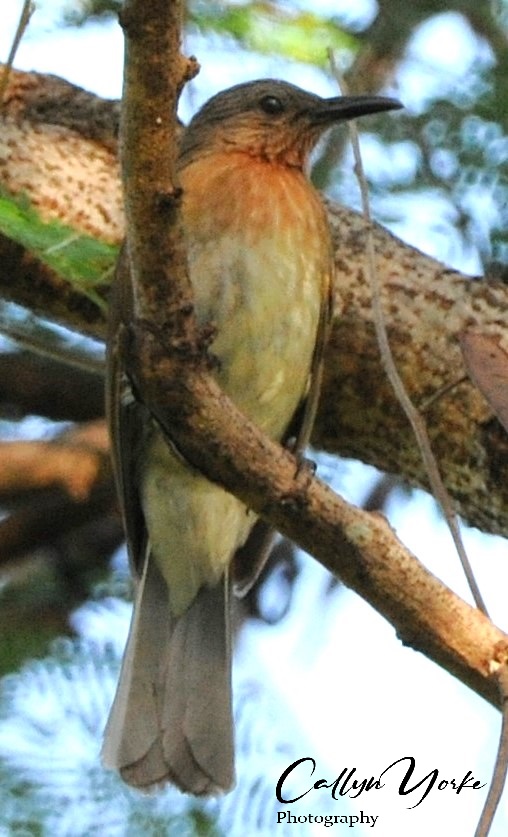
- Philippine Yellow-vented Bulbul Pycnonotus goiavier 6 vocal, greg. in gardens and second-growth; sympatric, though seldom encountered in close proximity of Philippine Bulbul, C, ubiq.
- Coleto Sarcops calvus 4 loosely gregarious at edge of forest and second-growth, sometimes perching in open on utility wires; one of only a handful of passerine species in the world with a featherless head (c.f. Bare-faced Bulbul of Laos and Noisy Friarbird of eastern Australia ) – none with an obvious adaptive significance, C, JEST (photo).

- Asian Glossy Starling Aplonis panayensis 2 (ad) on utility wire next to a row of ornamental palms, R, LMR
- Gray-streaked Flycatcher Muscicapa griseisticta 1 sallying from outer limbs of a tall, dead tree at the edge of a clearing, C, JEST
- Daurian Redstart Phoenicurus auroreus 1 (m) seen clearly from about 5 m away; found at sunrise, perched in low shrub at edge of grassy field, with a female Pied Bushchat nearby; Daurian Redstart is apparently a vagrant species in the Philippines (Allen, D. 2020. Birds of the Philippines. pp. 334-35), R, LMR
- Pied Bushchat Saxicola caprata 1 (f) moving around in grassy field, often perched low, sometimes on the ground, C, LMR (photo).

- Olive-backed Sunbird Cinnyris jugularis 2 (m,f) vocal, individuals moving quickly along the edges of dense second-growth with flowers and fruit, UC, JEST
- Eurasian Tree Sparrow Passer montanus 20 (m,f) vocal, greg. often on ground in gardens and clearings before flushed to trees, C, ubiq.
- Paddyfield Pipit Anthus rufulus 2 a pair always found together, contrasting markedly in the shades of plumage; one with much darker brown markings on head and dorsum and buffier flanks than the other bird (see photo), suggesting two separate subspecies, or possibly resident and migratory forms of the same subspecies; commonly found at sunrise (other times absent) on bare ground patches in grassy field C, LMR.
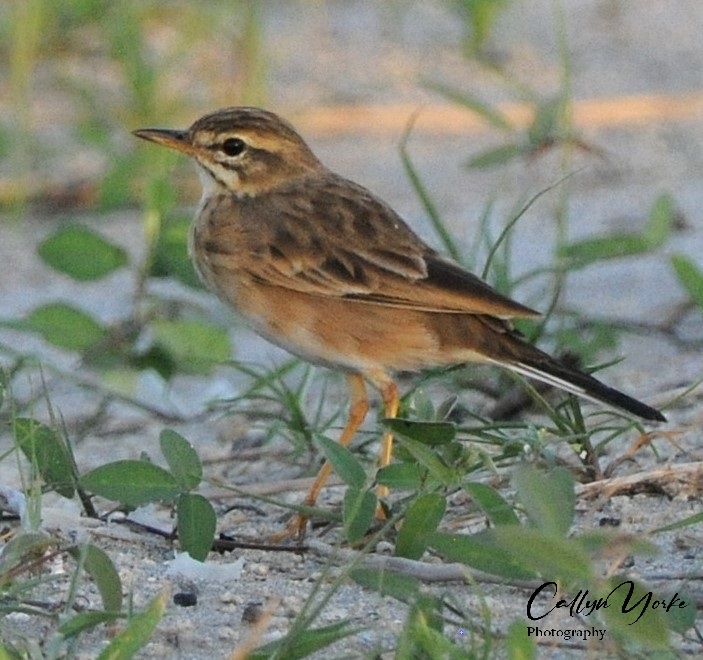
3. Las Pinas-Paranaque Wetland Park, Manila Bay
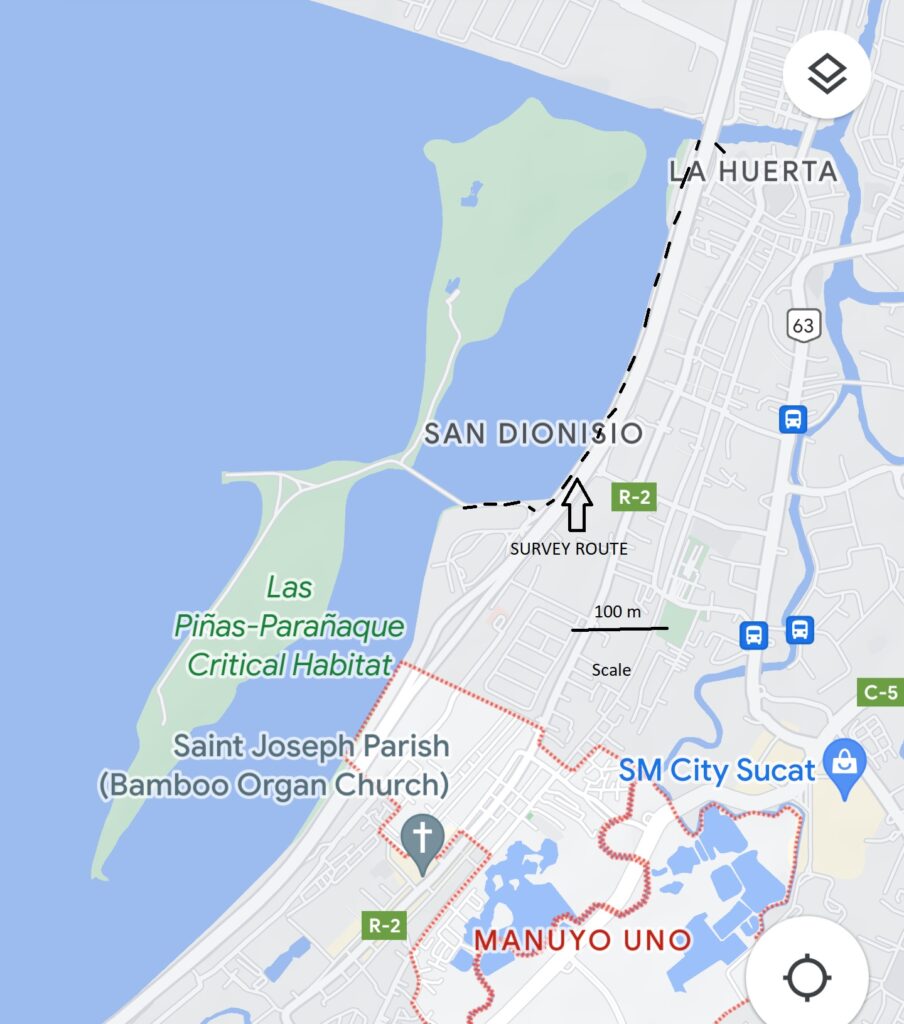
Las Pinas-Paranaque Wetland Park (LPP), as viewed from the south and east shoreline roads. Date of Survey: 1 December, 2022; 1335-1530 hrs. I walked slowly, back and forth on the entrance road (about 100 m in length), observing birds in the mangrove, tidal mudflats and open water of the adjacent lagoon. Most of the lagoon and mudflats were obscured by mangrove but there were several openings allowing for partial views of the lagoon (see Introduction for photos and further details). Later, on the way back (northward) to the hotel, I briefly surveyed the lagoon, mudflats and mangrove from the shoreline road; many more waterbirds, largely of the same species seen earlier from the entrance road, were noted in the northeastern portion of the lagoon (La Huerta – see above map). The total area visually surveyed was approximately 20 ha. Weather during the survey was cloudy; 32C, with light E, SE winds, 2 – 5 kph.
Annotated Bird List: Las Pinas-Paranaque Wetland Park, Manila Bay, Philippines, 1 December 2022 Callyn Yorke
Abundance: Number of individuals counted follow each species entry. Age, sex and molt (when known): ad = adult; imm = immature; m = male; f = female; bsc plmg = basic (non-breeding plumage; alt plmg = alternate (breeding) plumage.
Locality: Las Pinas – Paranaque Wetland Park (see accompanying map).
Ecology and Behavior: aerial insect hawking (ah); taking fruit, berries or parts of flowers (fr); gleaning insects from foliage (ig); probing into surface (pr); estimated height (m) above ground (agl); gregarious (greg); mixed-species flock (msf).
Systematics and Nomenclature used herein, is an amalgam of Avibase, International Ornithological Congress (IOC) and current (2022) online resources, i.e. Birds of the World, Cornell University, USA.
* Philippine Endemic Species listed in Bold Face Type
- Feral Rock Pigeon Columba livia 10 greg. flying low over mudflats.
- Barred Rail Hypotaenidia torquata 3 greg. walking, pr, in mangrove.
- White-breasted Waterhen Amaurornis phoenicurus 1 walking in mangrove.
- Striated Heron Butorides striata 1 flushed from mangrove.
- Rufous Night-heron Nycticorax caledonicus 1 flew to wooden post at edge of mangrove in north eastern sector.
- Pond Heron Ardeola sp. 1 flying low over mudflats at edge of mangrove, NE.
- Gray Heron Ardea cinerea 12 loosely greg. with EGEG and LIEG on mudflat, NE.
- Purple Heron Ardea purpurea 4 individuals on mudflats with other herons and egrets, NE.
- Eastern Great Egret Ardea modesta 15 greg. on mudflats and in shallows with other herons and egrets, NE.
- Little Egret Egretta garzetta 12 loosely gregarious on mudflats and in shallows with other herons and egrets, NE.
- Black-winged Stilt Himantopus himantopus 17 (ad, imm; bsc. and trans. bsc. plmg.) greg. pr in shallows and on mudflats with other shorebirds (photo – see Introduction)
- Little Ringed Plover Charadrius dubius dubius and C. d. curonicus) 4 (C. d. dubius), 1 (C. d. curonicus) loosely gregarious while foraging on mudflats.
- Common Greenshank Tringa nebularia 2 greg. a pair foraging on mudflats.
- Wood Sandpiper Tringa glareola 1 foraging on mudflat in msf with MASA and BWST (photo).

- Marsh Sandpiper Tringa stagnatilis 5 greg. foraging on mudflats (photo).
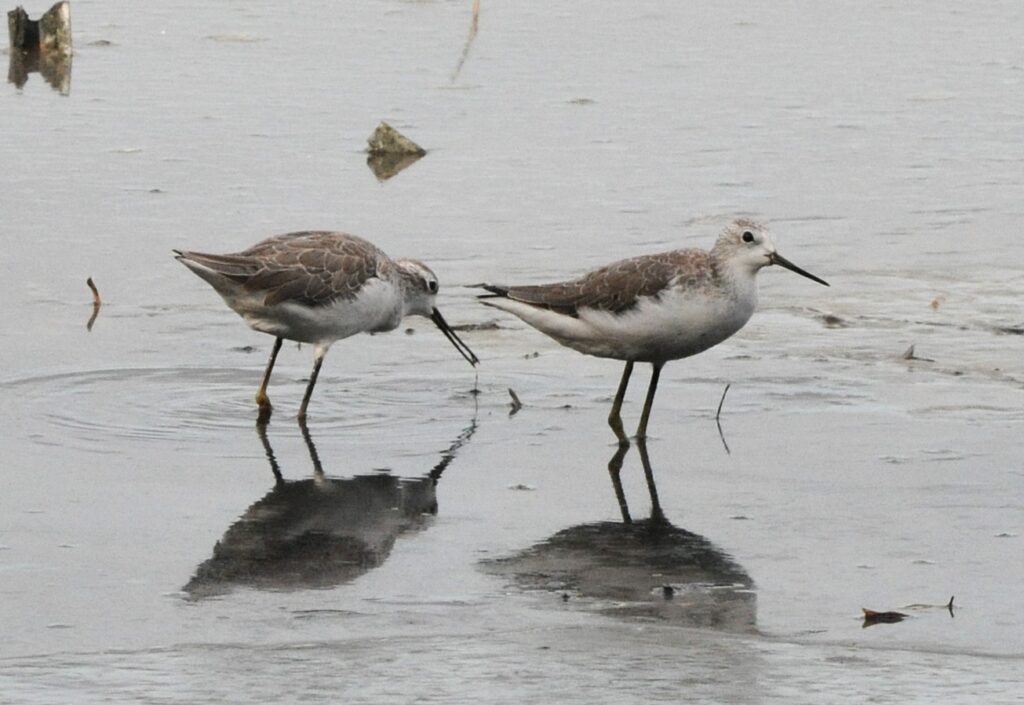
- Whiskered Tern Chlidonias hybrida 2 individuals flying low over the lagoon, circling and returning multiple times.
- Collared Kingfisher Todiramphus collaris 2 readily flushed from lagoon side of mangrove.
- Philippine Pied Fantail Rhipidura nigritorquis 2 greg. ig. low in adjacent hedgerow of planted deciduous trees.
- Eurasian Barn Swallow Hirundo rustica 40 greg., flying over lagoon, circling and returning multlple times.
- Pacific Swallow Hirundo tahitica 2 a pair on utility wire in adjacent urban area.
- Philippine Yellow-vented Bulbul Pycnonotus goiavier 2 greg. a pair vocal in mangrove.
- Arctic Warbler Phylloscopus borealis 1 foraging quickly in mangrove foliage.